Take a look back at the 2022 exhibit Portraits of the Past.
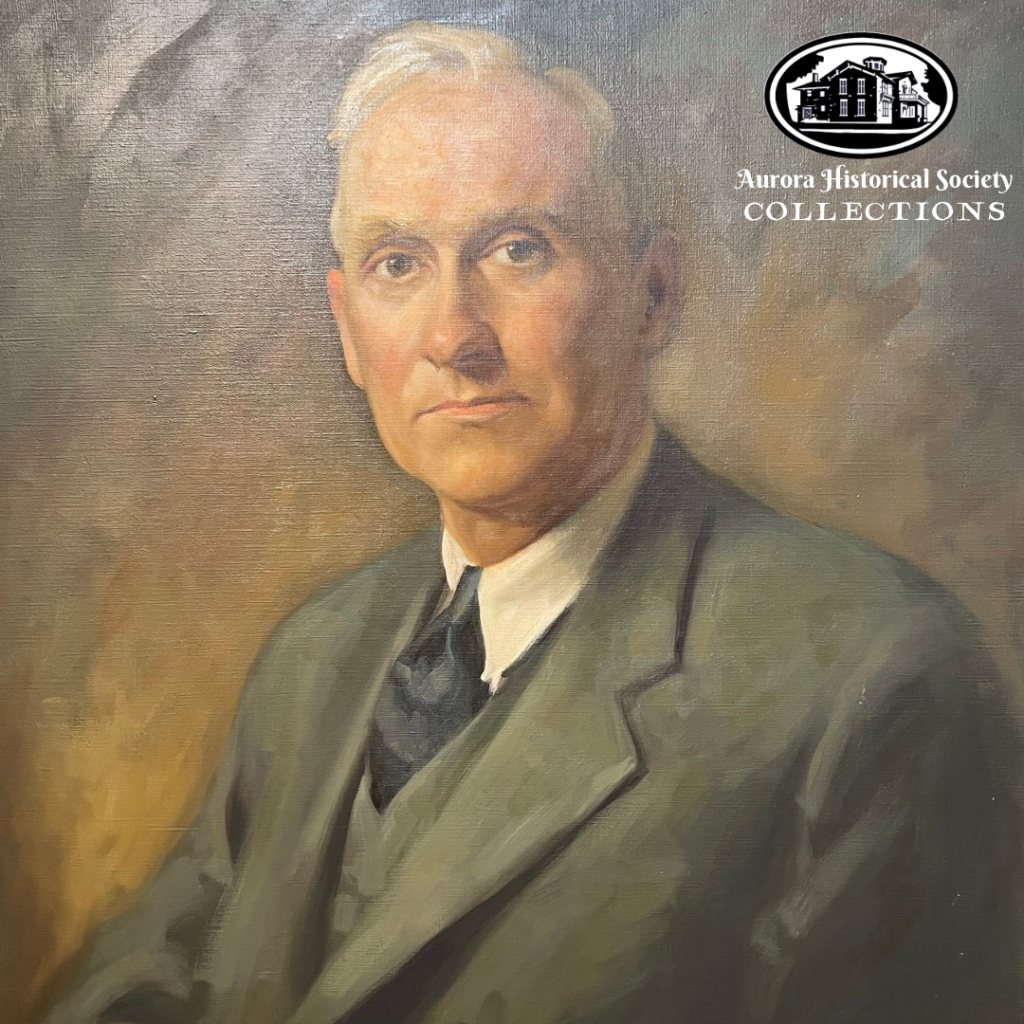
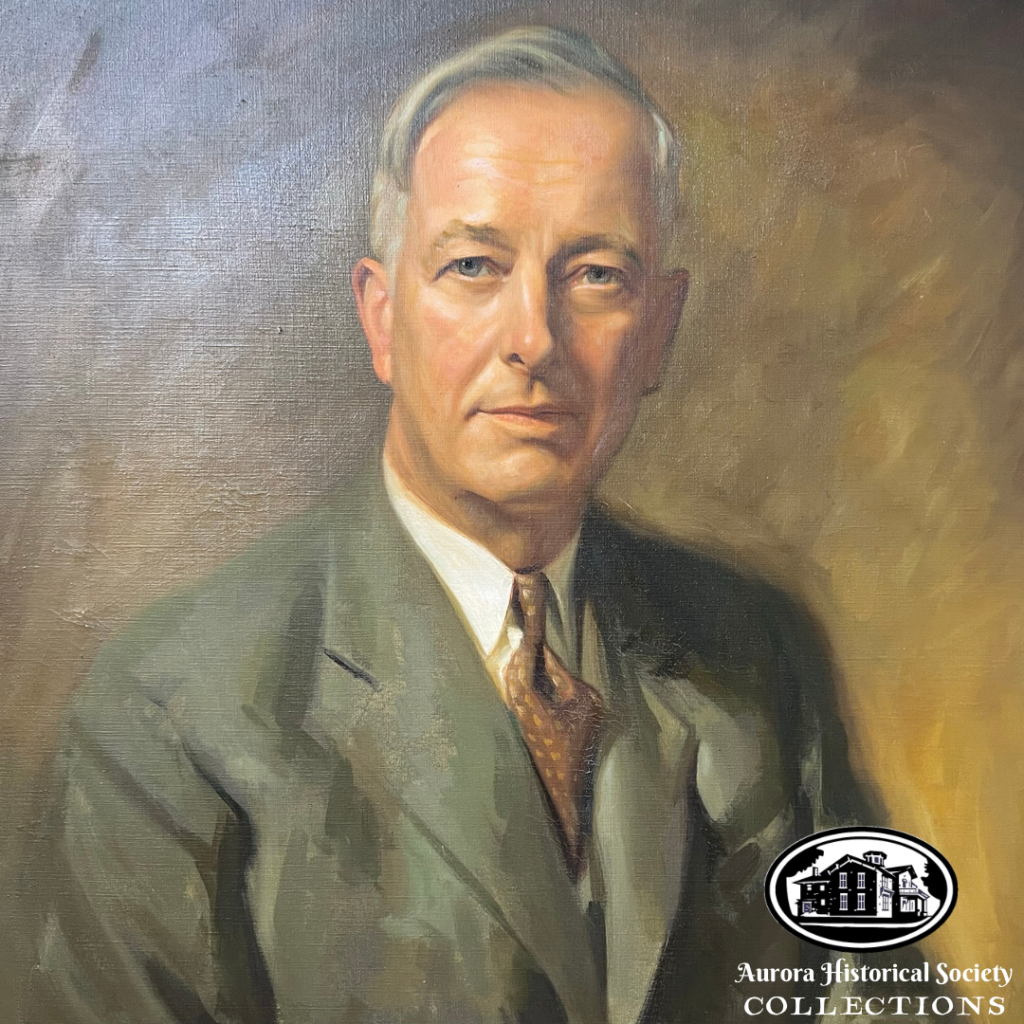
Harry H. Barber & William B. Greene; Oil portraits by James J. Ingwersen, 1966
Harry Barber & W. B. Greene were engineers at Aurora’s Stephens-Adamson Company when in 1916 they set off on their own to form Barber-Greene. The company specialized in bulk material conveying and loading equipment and later moved on to road building equipment, becoming a multi-national corporation by the 1950s.
These portraits were commissioned for the company’s 50th anniversary in 1966. As of the date of the exhibit, artist James J. Ingwersen was still living. After his 1948 graduation from the American Academy of Art in Chicago, he began a career as a portrait artist, becoming nationally known for his portraits of statesmen, scholars, and business leaders.
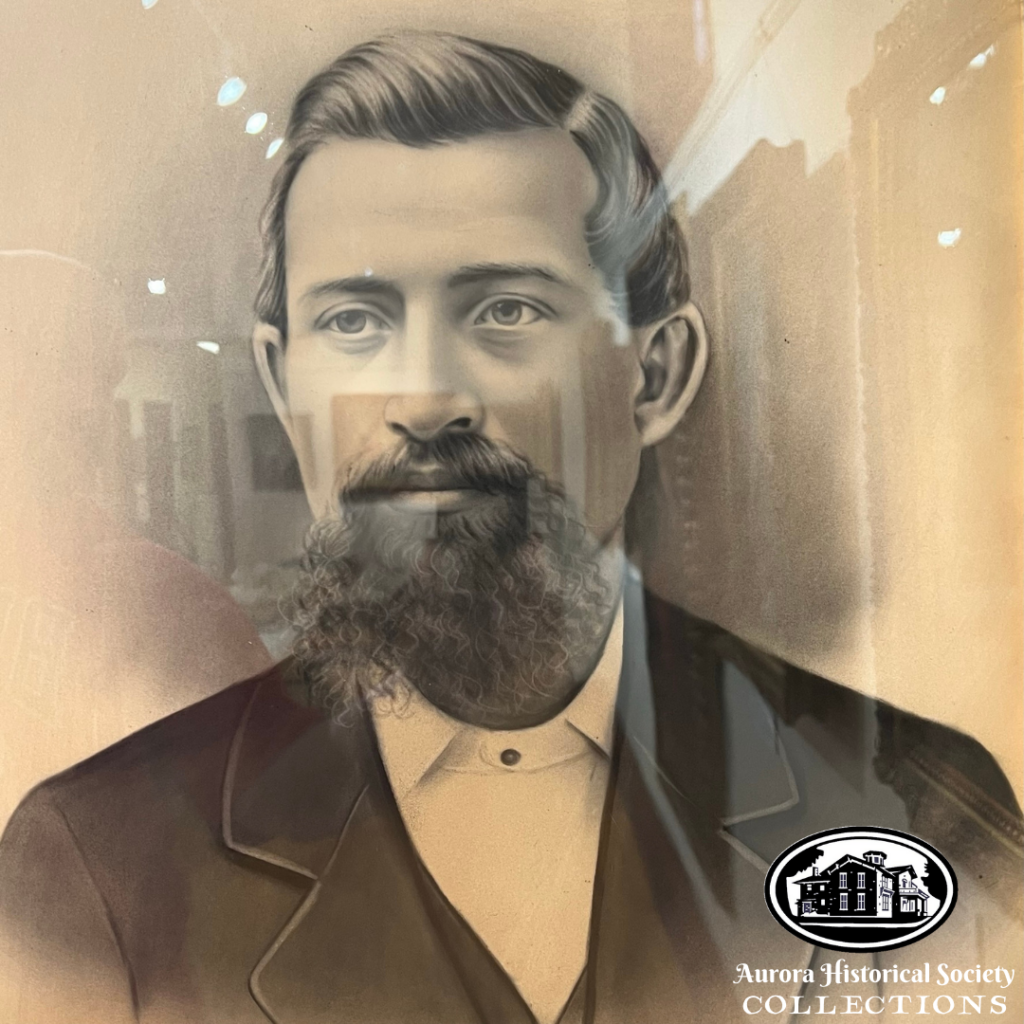
John Linden (1847-1924), white and black chalk over photo on paper, 1880s
Born in Luxembourg, Linden came to America as a boy with his family in 1861, settling in Aurora. As a younger man, he was foreman of the Stolp woolen mill. Starting in 1884, he made a living as a plumber and steam and gas fitter. In later years, he was city superintendent of sewers, building, and plumbing. Linden was also one of the founders of Mt. Olivet Cemetery, where he is buried.
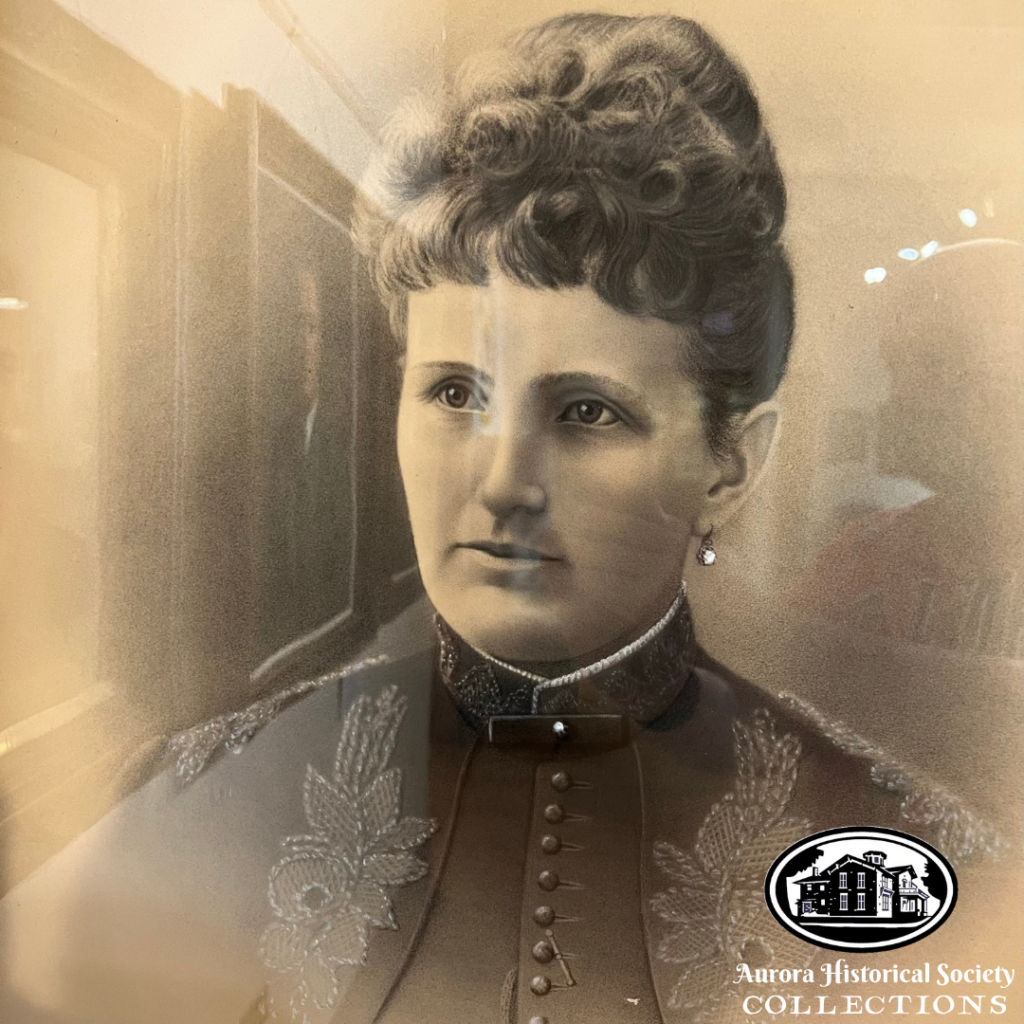
Hand-retouched from photograph on paper, 1880s. No information available on artist.
Emma, born in Germany, was the second wife of prosperous clothier Nathan Goldsmith (1840-1889), marrying in 1879. Both were a part of Aurora’s early German-Jewish community.
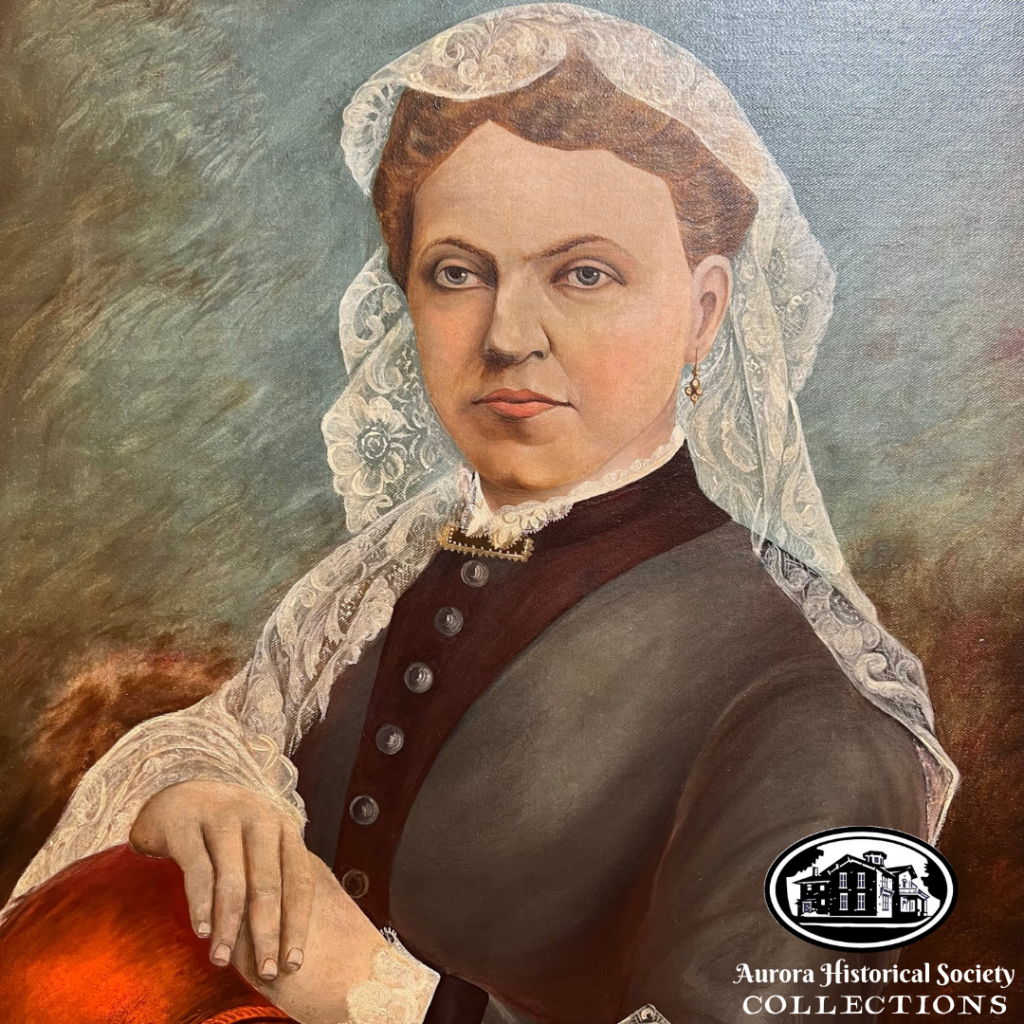
Oil on canvas by her brother-in-law, Courtney Simpson, 1896
Marion Tanner, a daughter of William A. Tanner, married Frank M. Simpson (1850-1915) in 1876 in her father’s house. They had five children, four of whom lived to adulthood. Frank made his living as a carriage trimmer, and later as a farmer, while Marion kept house.
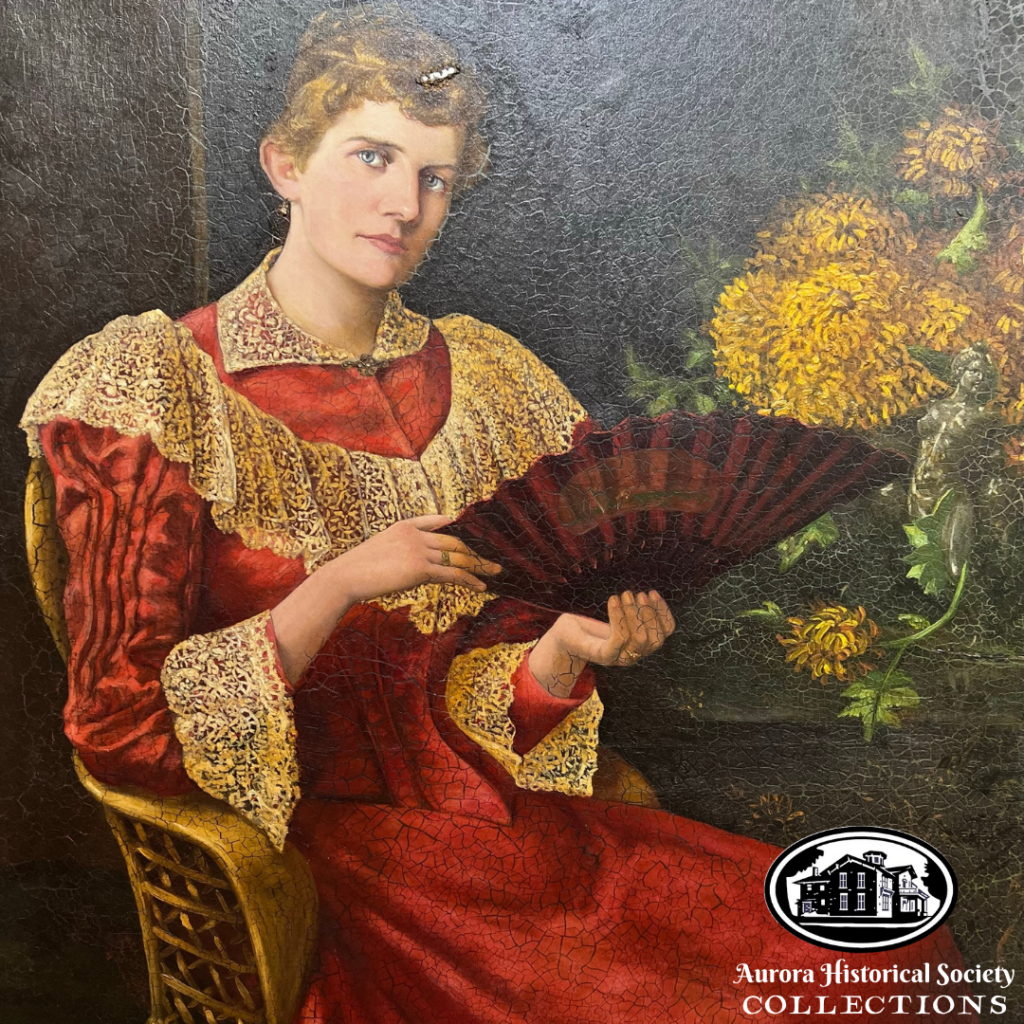
Part of the Aurora Historical Society’s Collections since 1973
Alice grew up in Mt. Morris in Ogle County, Illinois, and spent much of her life there. She arrived in Aurora later in life as a widow about 1915 and lived the rest of her days here. While still in Ogle County, she had this portrait painted. Ivan Peronet (1864-1915) was an artist, set painter, and actor, born in England, who came to America in his twenties and made his home in Philadelphia. After starring in a traveling production that played in Oregon, Illinois in September 1893, the artist “remained in Oregon to complete some portraits he was painting in oils.” This portrait evidently was one of them, utilizing oil paint and asphaltum, a dark, tar-like medium.
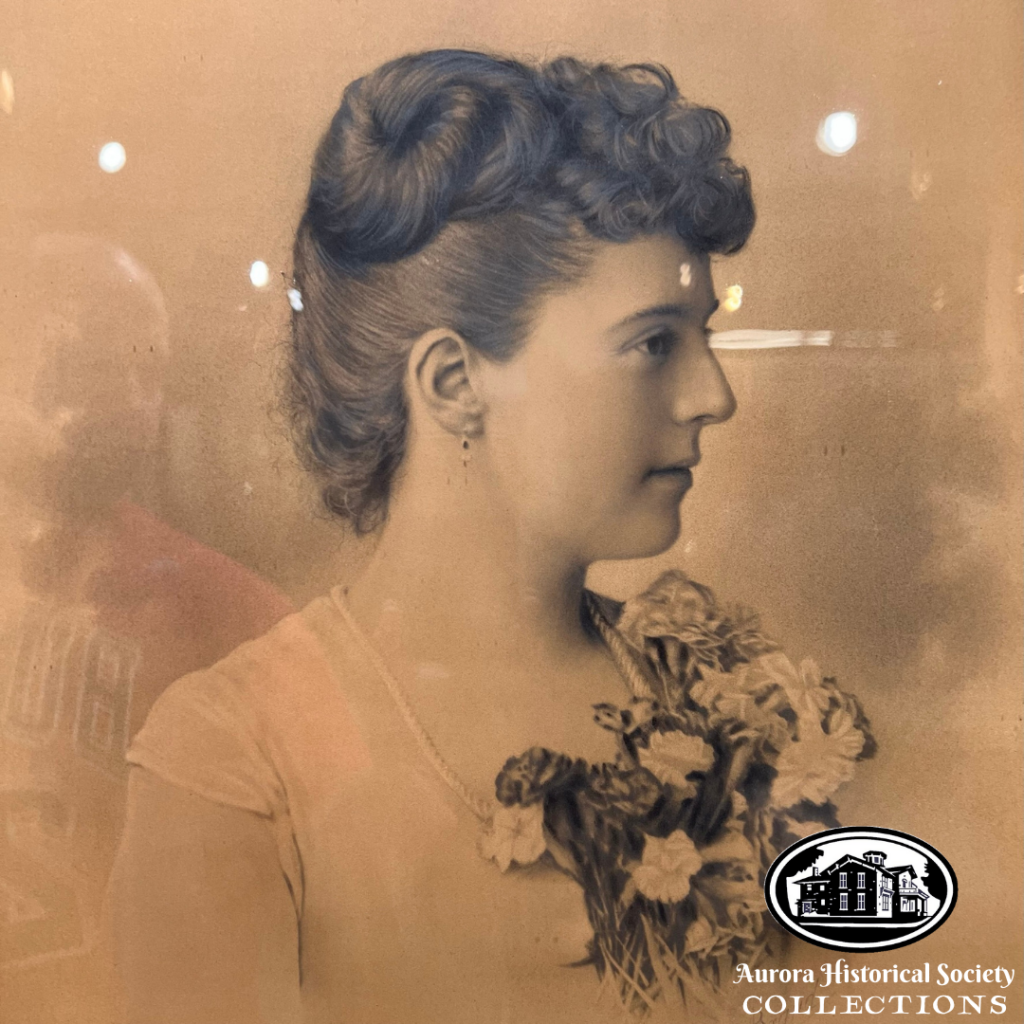
Hand retouched photo on paper; no information available on the artist
This image is believed to be perhaps a high school graduation picture. Louise never married and lived in the family home on Spruce Street in Aurora until the last few years of her life.
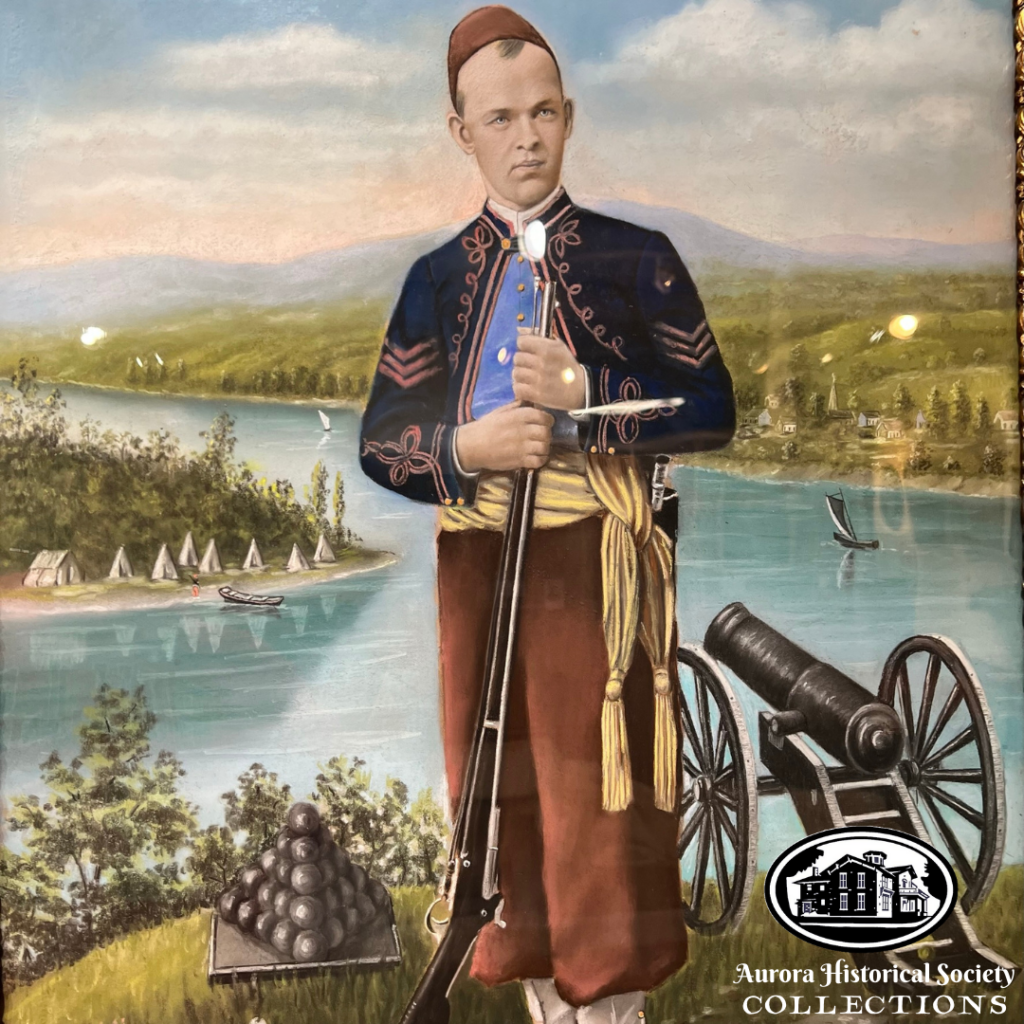
Willifam F. Holt (1867-1940)
Hand-colored pastel based on a photograph’ Artist, Casimir Arcouet
William Holt, who made his living as a railroad office clerk, was an original member of the Aurora Zouaves, a precision military drill team that rose to championship fame in the 1890s. French-born artist Casimir Arcouet (1842-1902) came to the U.S. with his family as a child; in 1872, he came to Aurora. Arcouet was a prominent artist in all media: photography, painting, and sculpture.
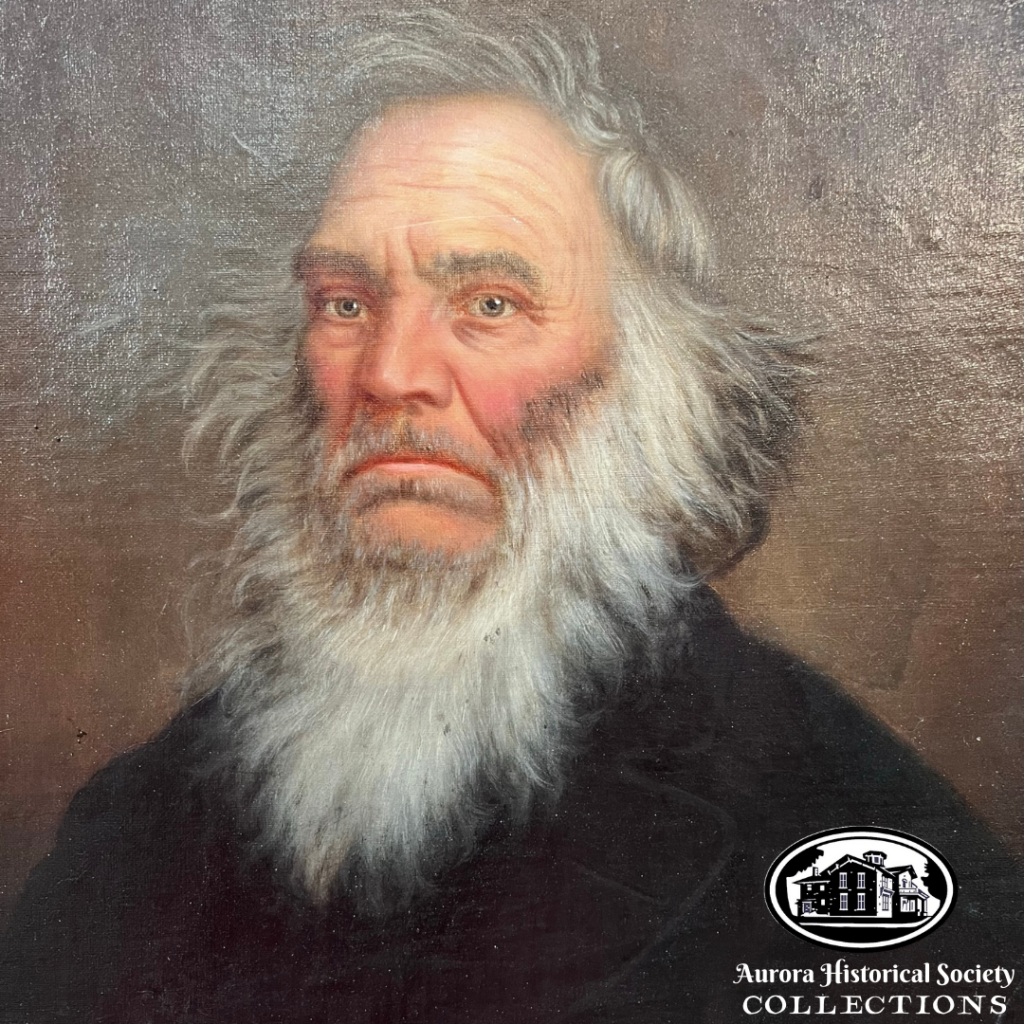
Oil painting on canvas by Martin Woodruff, 1875
Born in New York state, artist Martin Woodruff (1829-1904) came to Aurora with his parents while still a child. He made a steady living as a portrait artist.
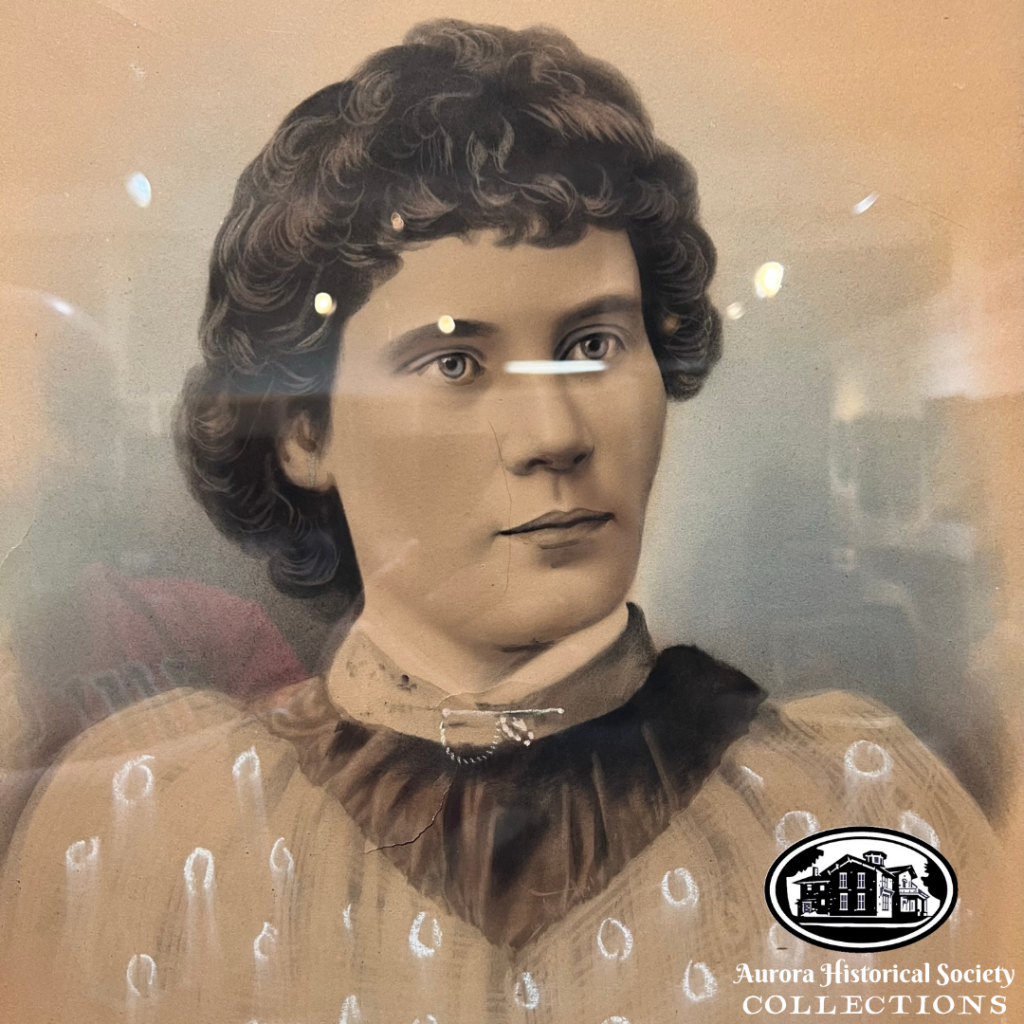
Hand retouched photo on paper; no information on artist
Born in Sweden in 1861, Sophie came to Chicago as a young woman and married George Thalhamer there in 1896. They had two children and moved the family to Aurora in 1907.
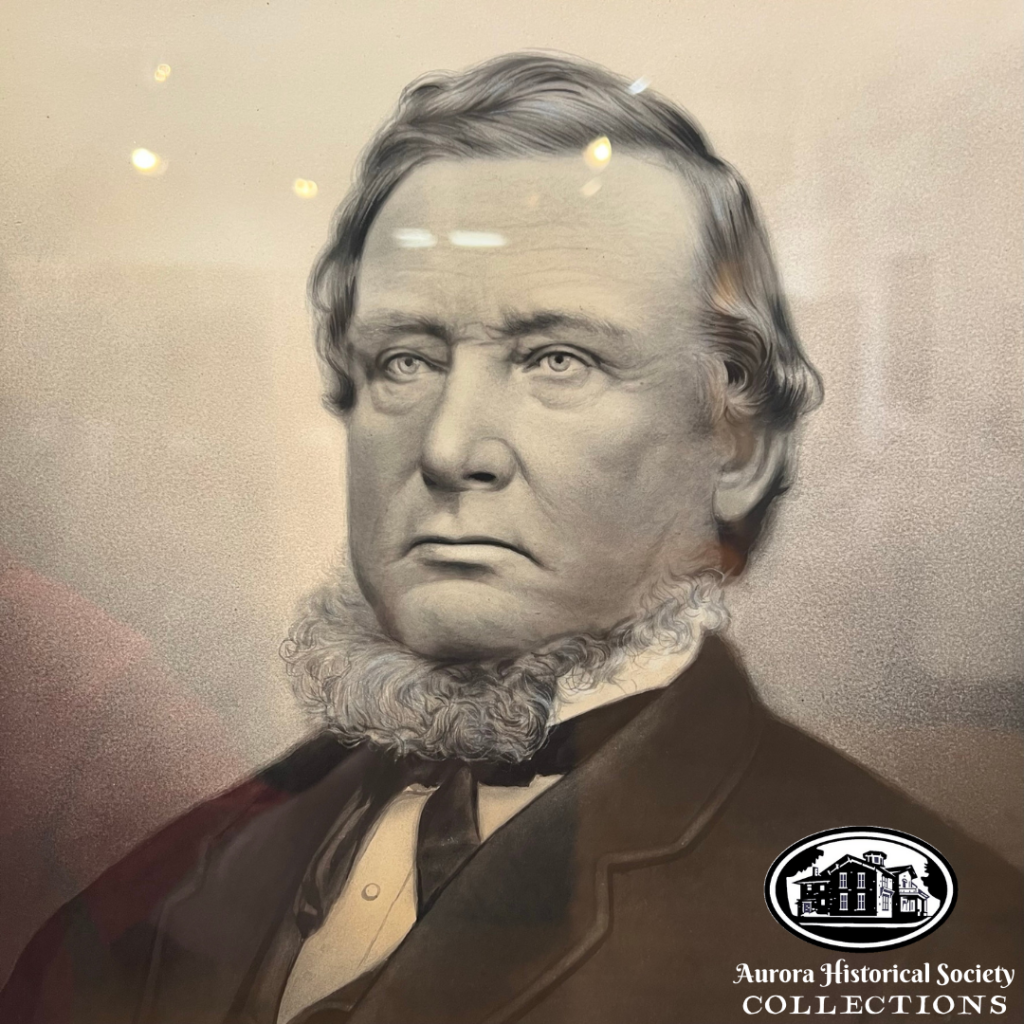
White & black chalk over photograph on paper
Hailing from New York state, Clark Wilder was an early settler arriving with his family in 1837. He settled on the west side after becoming a prominent farmer and active public official. After his death, it was written, “He was known to the people of his locality as a man full of benevolence, and the beggar was never turned from his door without both material support and kind words.” Many homes on the near west side are located on land that was once part of his farm; West Aurora Cemetery, where he is buried, was also once part of his farm.
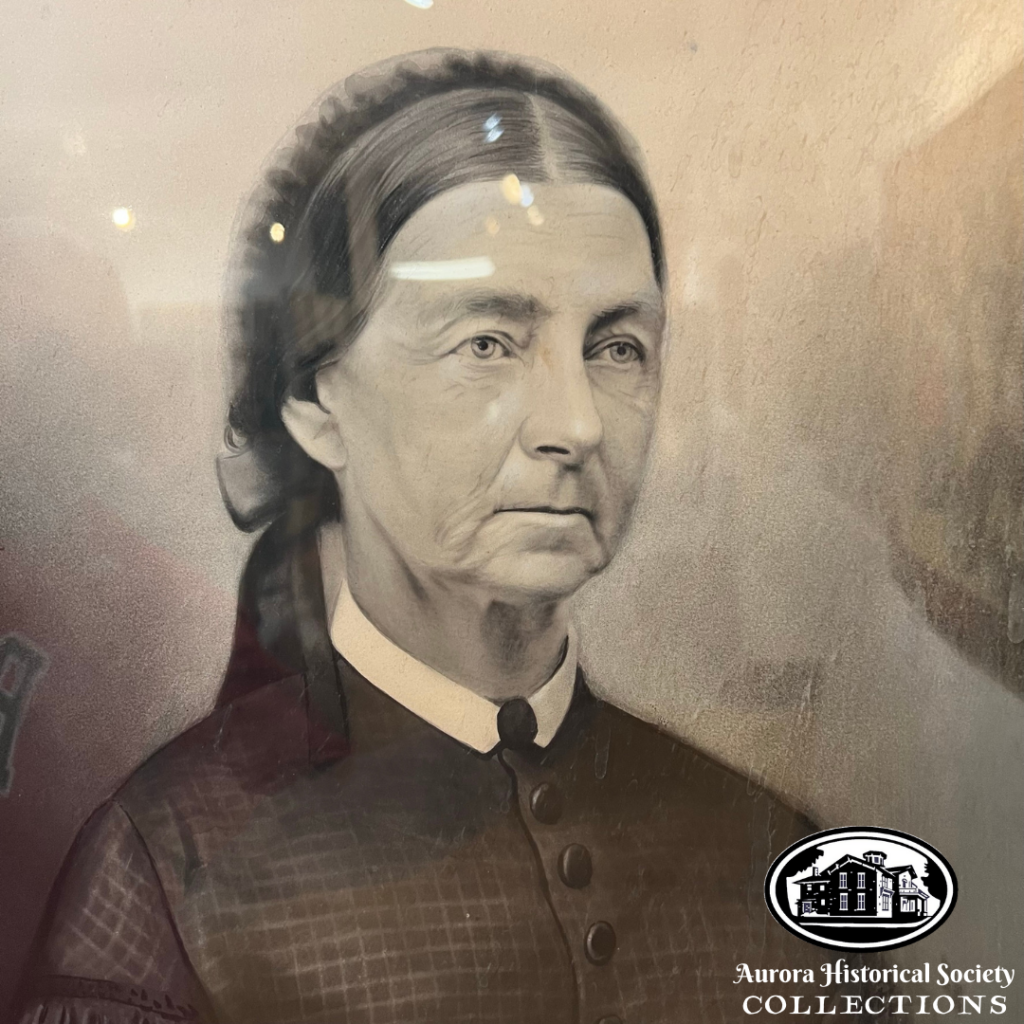
White & black chalk over photograph on paper
Hannah married Clark Wilder in New York state in 1883. In 1837, she came “west” with her husband and two young children, settling on the west side of Aurora. She raised eight children, one of whom was killed in the Civil War. She outlived her husband by thirty years, continuing the daily business of the farm and dairy, and residing in their stone house on Lake Street.
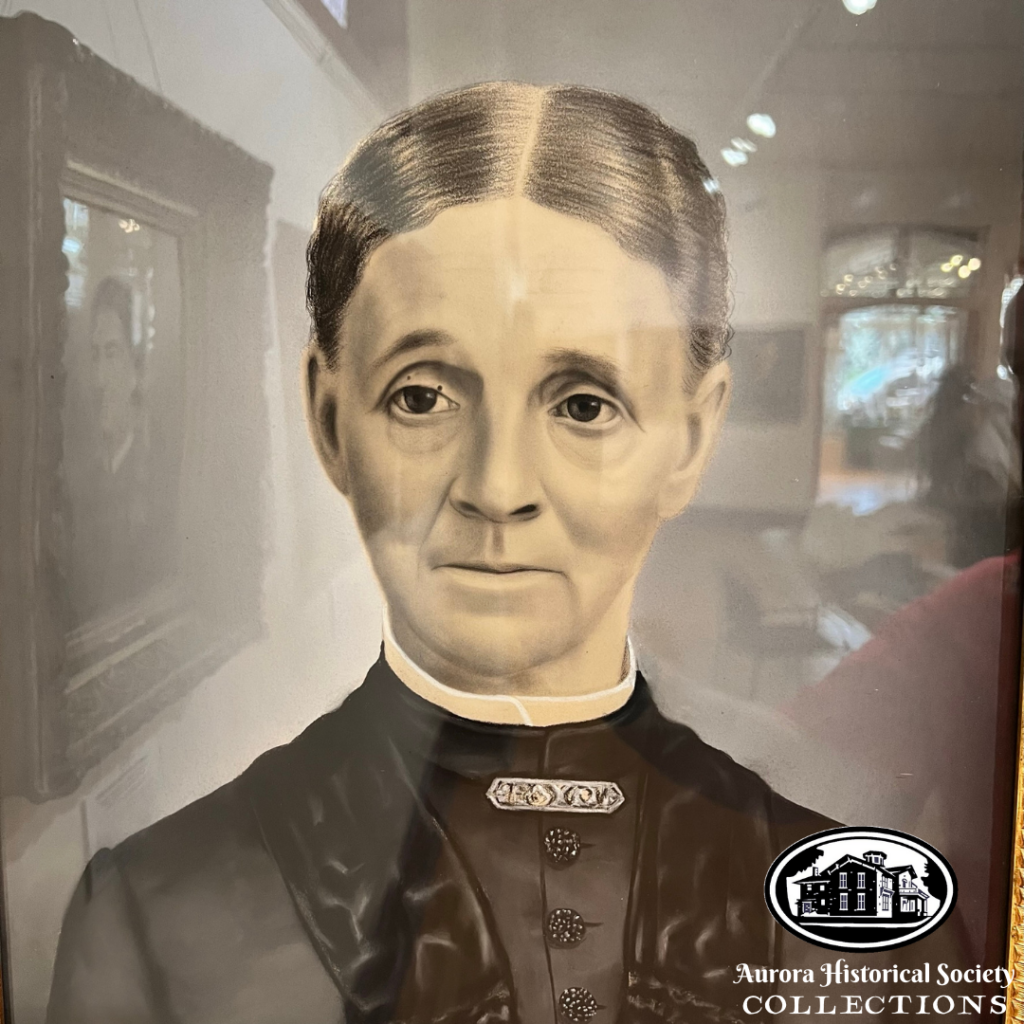
Born in England, Esther emigrated to America in 1855 with her husband, Whittaker Holden, settling on the east side of Aurora. The pair of portraits of she and her husband are hand-colored images rendered from photographs on paper.
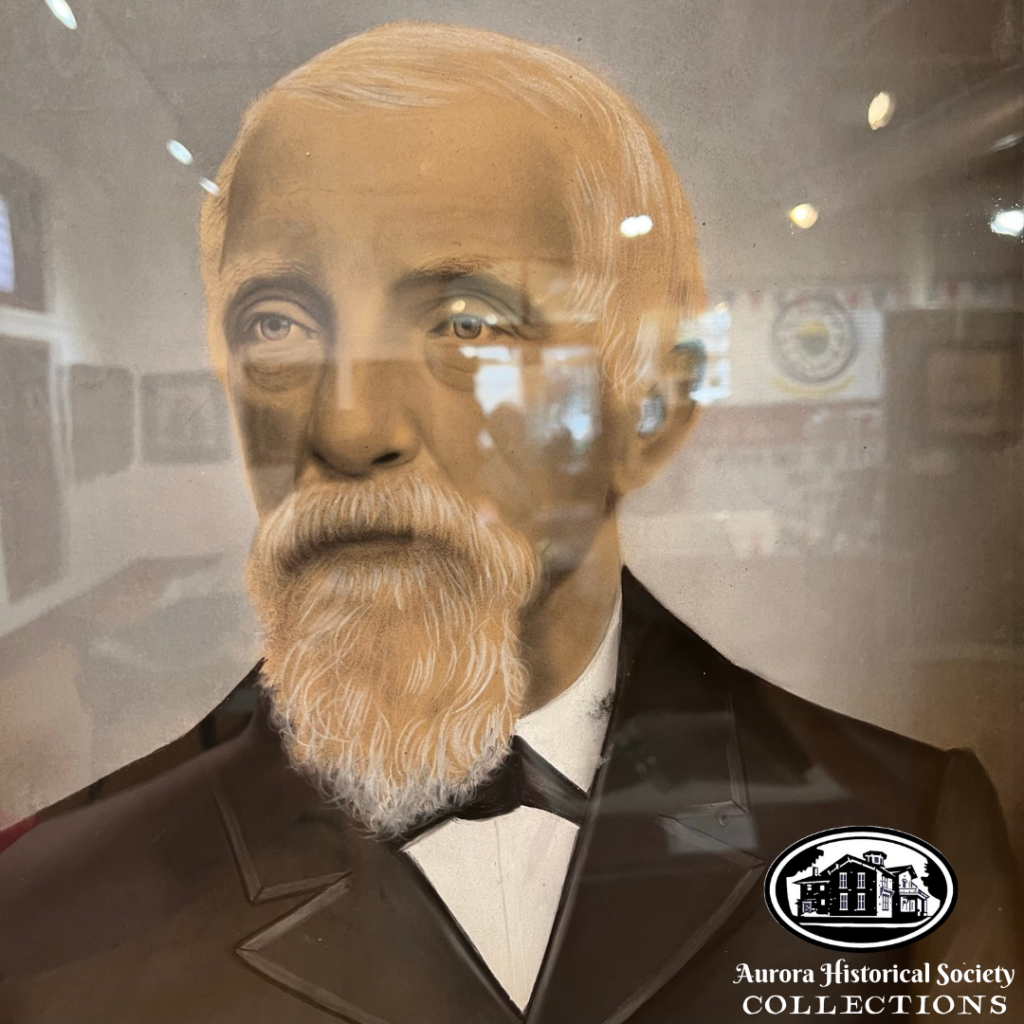
A stone cutter by trade, the English-born Holden emigrated to the U.S. in 1855 with his wife, Esther, and settled in Aurora, where he lived the rest of his life.
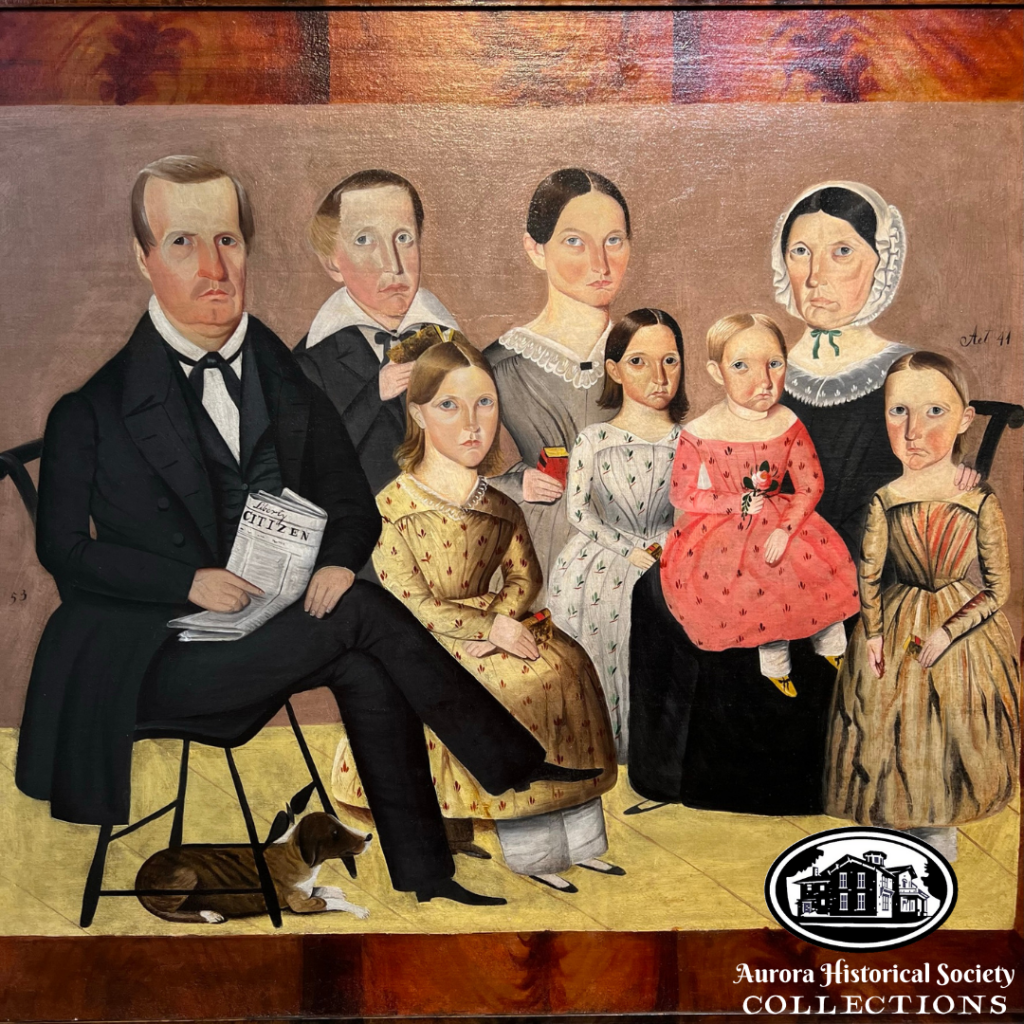
Oil on canvas by Sheldon Peck, about 1846
John J. Wagner (also Waggoner) was a prosperous farmer who came from New York state to Aurora in 1838. He was also a key figure in the local abolitionist (anti-slavery) movement, serving as a “conductor” on the Underground Railroad, the network to transport escaped slaves to Canada. Sheldon Peck (1797-1868), also an abolitionist and conductor on the Underground Railroad, owned a farm in present-day Lombard, having moved here from the East in 1836. He traveled the area painting portraits, often of people connected to the movement. He boarded with the Wagner family while creating this portrait, and accepted as payment a horse valued at $50.
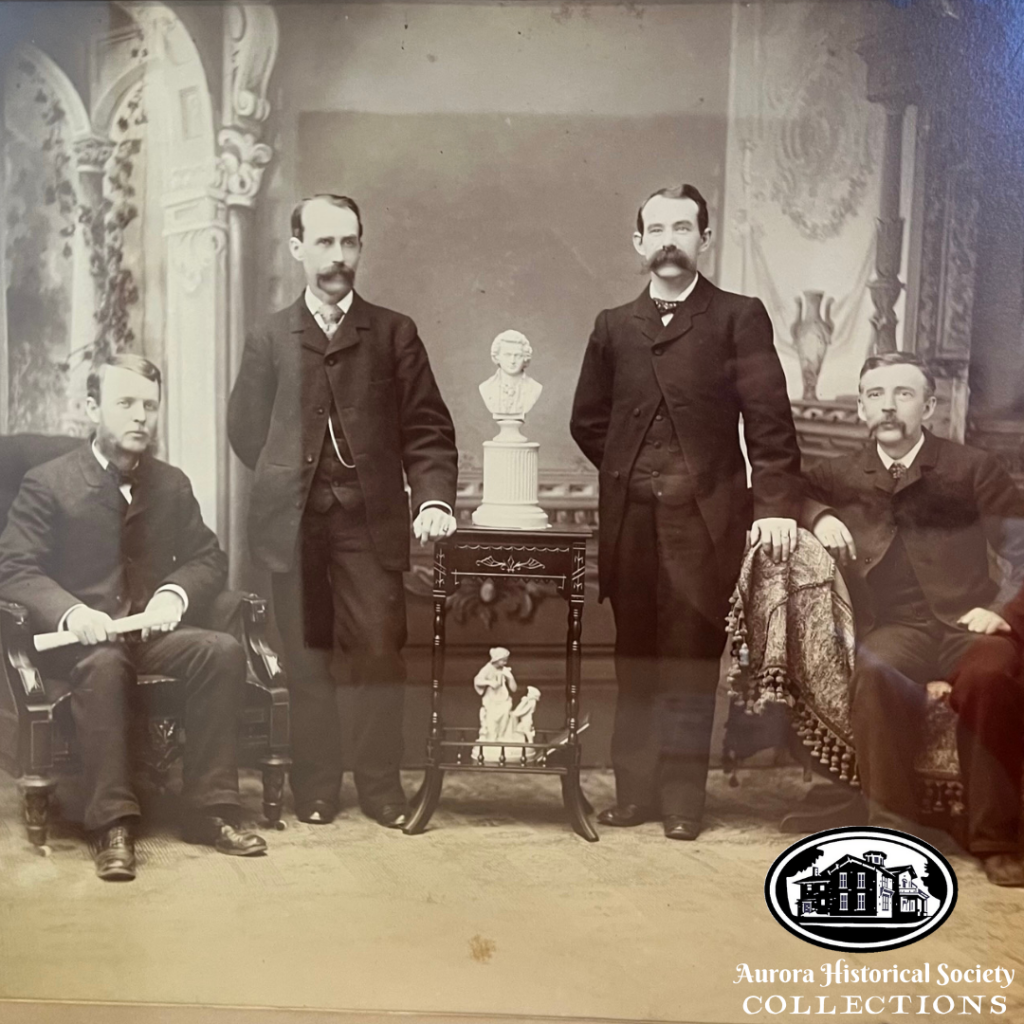
This photograph of the West Side Quartet features S.B. Taylor at right. Taylor was a prolific photographer; this image was evidently shot at his studio.
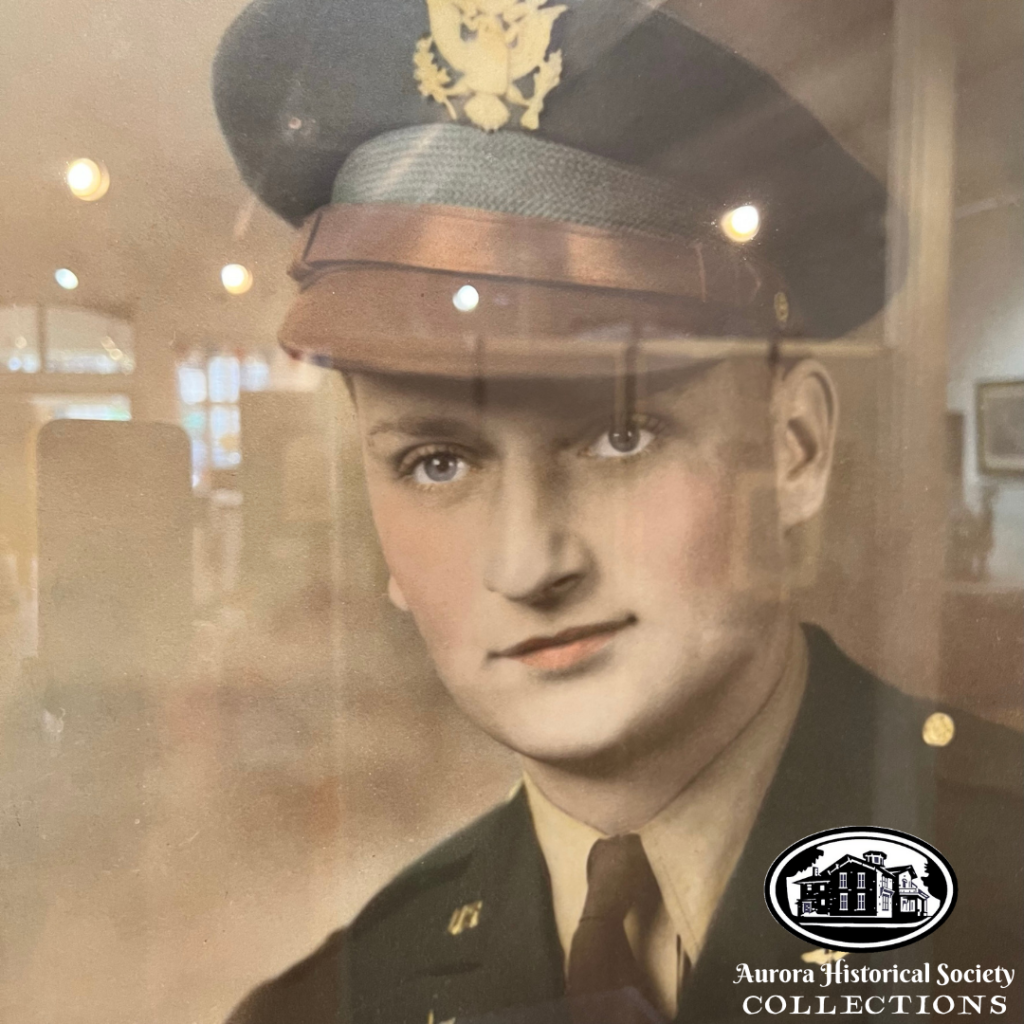
Hand-colored photograph. On loan from the Truemper Family
Auroran Walter E. Trumper was killed when his B-17 crashed upon return from a bombing mission. The plane had taken enemy fire and his co-pilot was dead; the pilot was wounded but still alive. After allowing the rest of the crew to bail out, Truemper (the navigator), and the flight engineer refused to leave the pilot and were making their third attempt to land the damaged plane when it crashed. Both were awarded posthumous Medals of Honor.
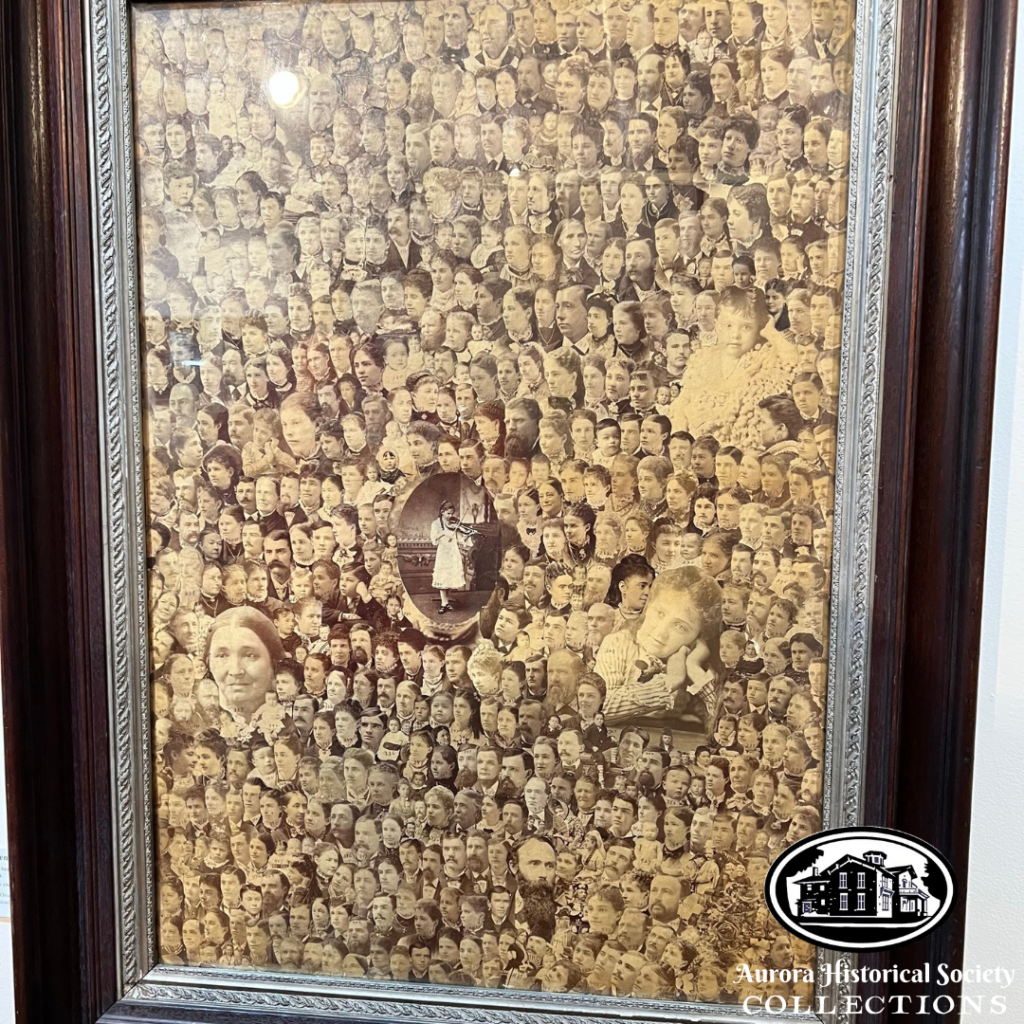
Photos taken by Aurora photographer S. B. Taylor between 1870 and 1890, compiled by his wife, Emma
Samuel B. Taylor (1838-1917) was born and raised in Ohio and came to Aurora after the Civil War. For over four decades, he made his living as a photographer.
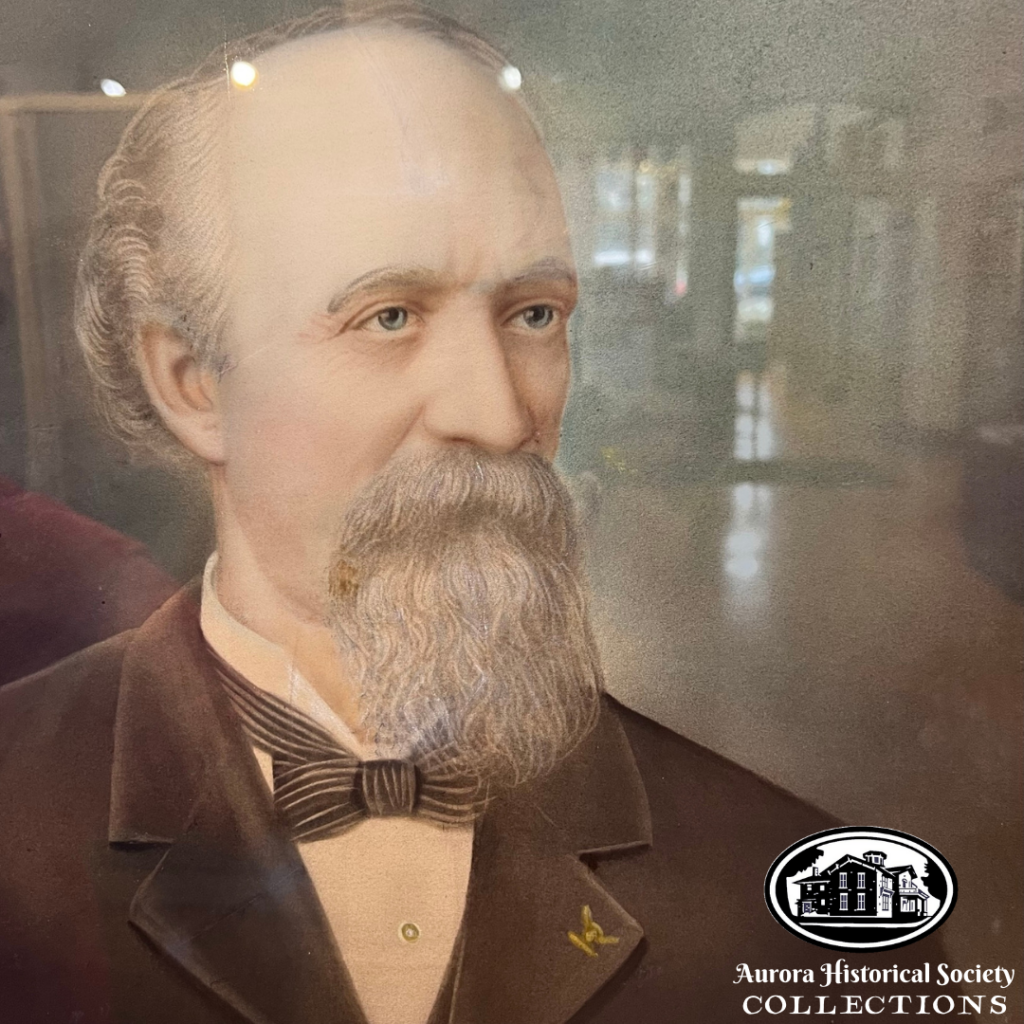
Pastel over photo on paper, c. 1890-1900. No information on the artist, Edgar
H.H. Evans lived in Aurora from the age of five. His business interests were many — restauranteur, hotelier, banker, electric railway promoter, and real estate mogul. He also served in the Illinois state senate for nearly thirty years.
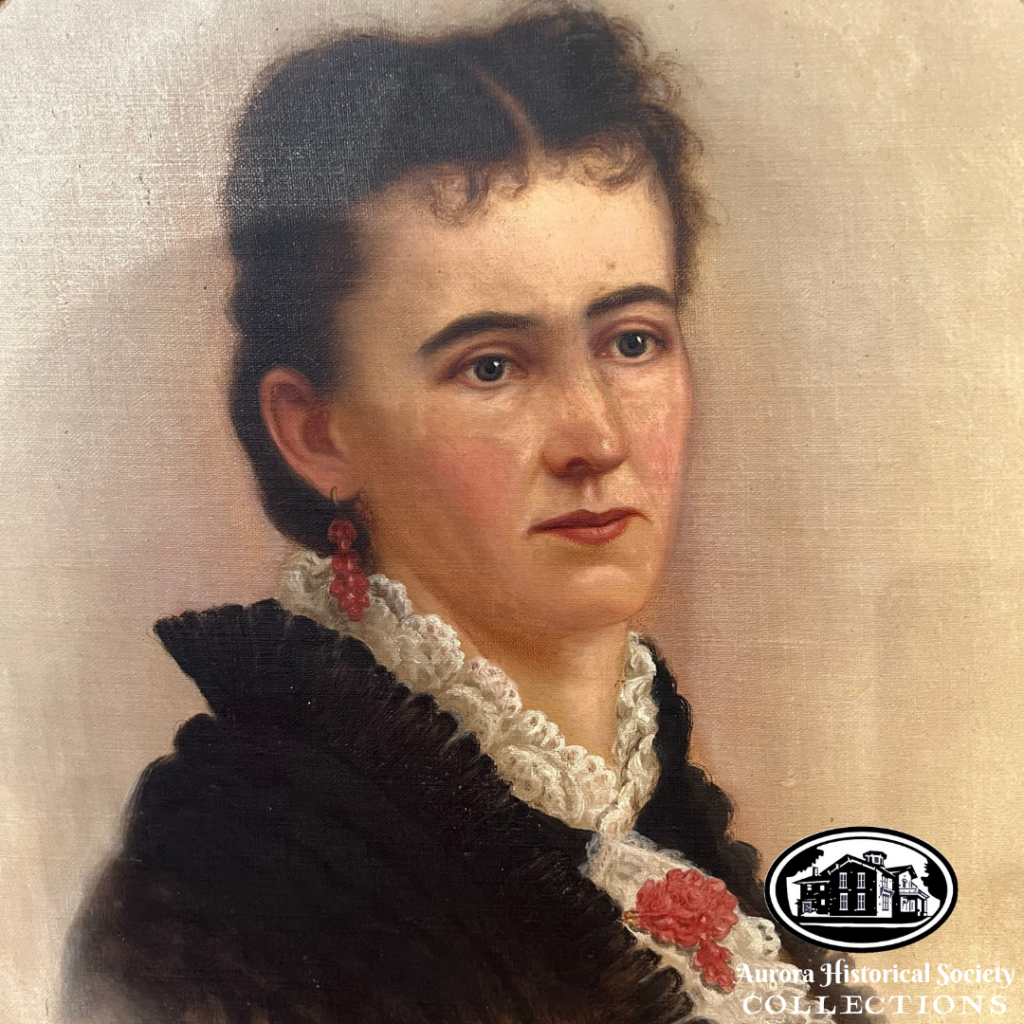
Oil on canvas by Martin Woodruff, 1875
Born in New York state, artist Martin Woodruff (1829-1904) came to Aurora with his parents while still a child. He made a steady living as a portrait artist.
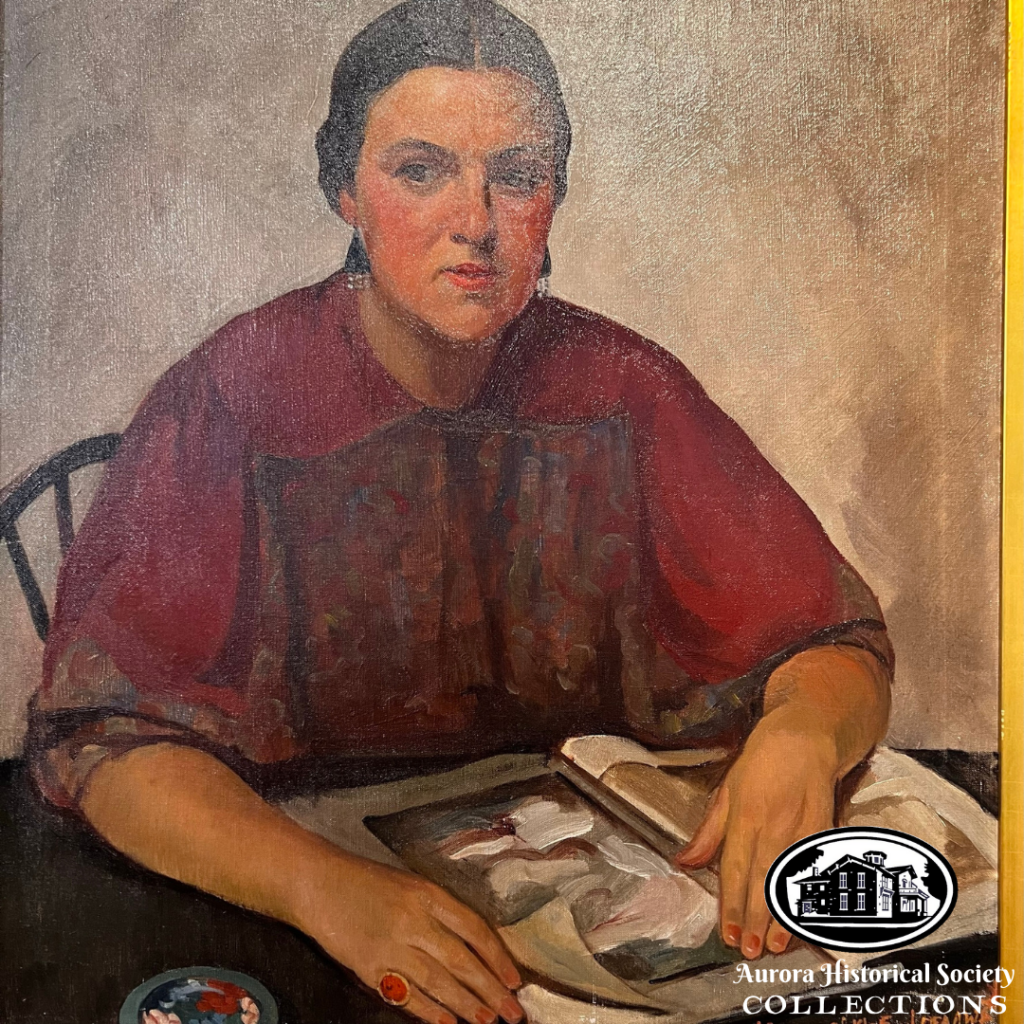
Oil on canvas by Benjamin S. Kanne, 1929
Lifelong Auroran Ruth Van Sickle Ford made her mark as a watercolor painter and art teacher. She graduated from the Chicago Academy of Fine Arts in 1918, where she later taught. She served as its president, director, and owner from 1937 through 1960, nurturing many artists.
Benjamin S. Kanne (1897-1952) came to the U.S. as a child with his family, Jewish immigrants from the Russian empire, settling in Chicago. He became an accomplished portrait artist. He was a close acquaintance of Ruth Ford through the Chicago Academy, and both had studio space at the famed Tree Studios.
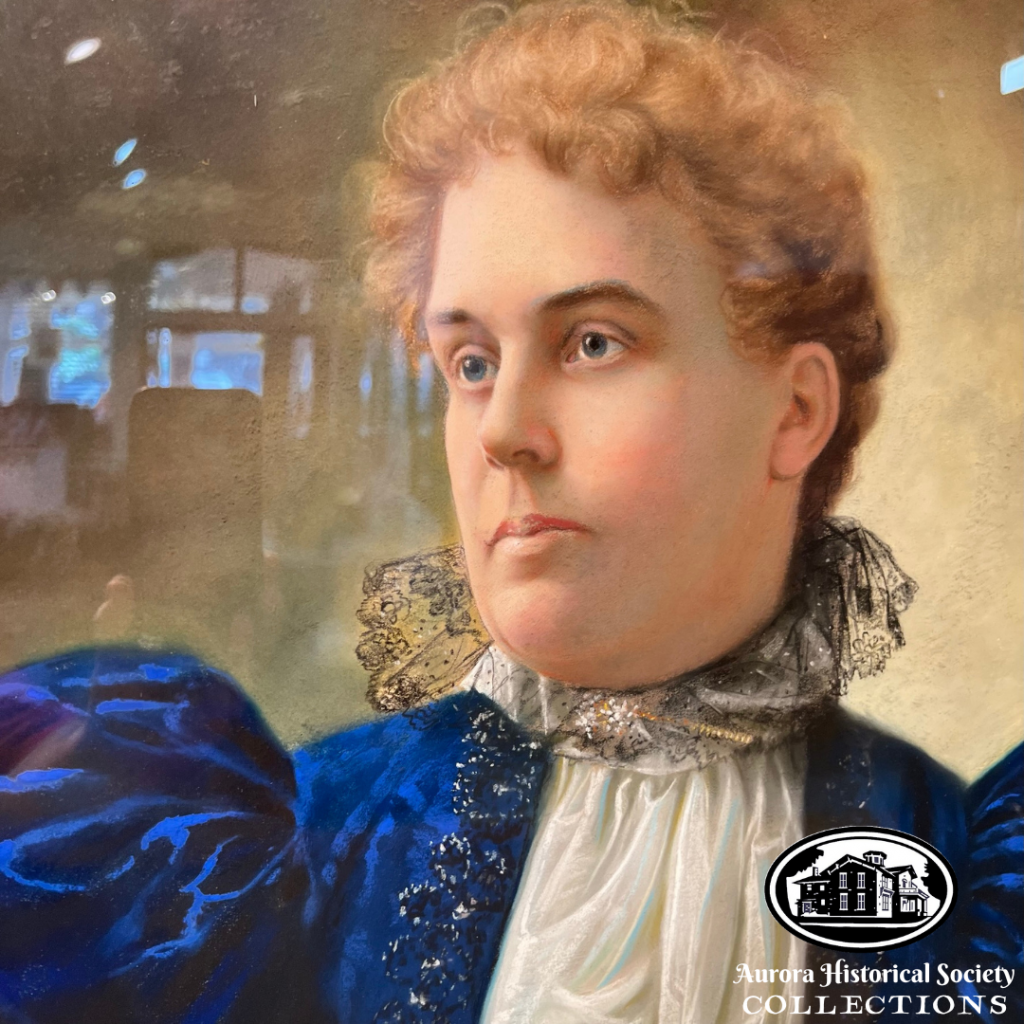
Pastel on paper under glass, gilded oval frame. No information on artist, Horton.
A lifelong Auroran, Ida was the daughter of J.M. Andrus, a prosperous dealer in marble and granite monuments. She is portrayed here at about age 25, shortly before her 1883 marriage to T. Otto Fisk (1856-1924), who would take over the monument business a few years later.
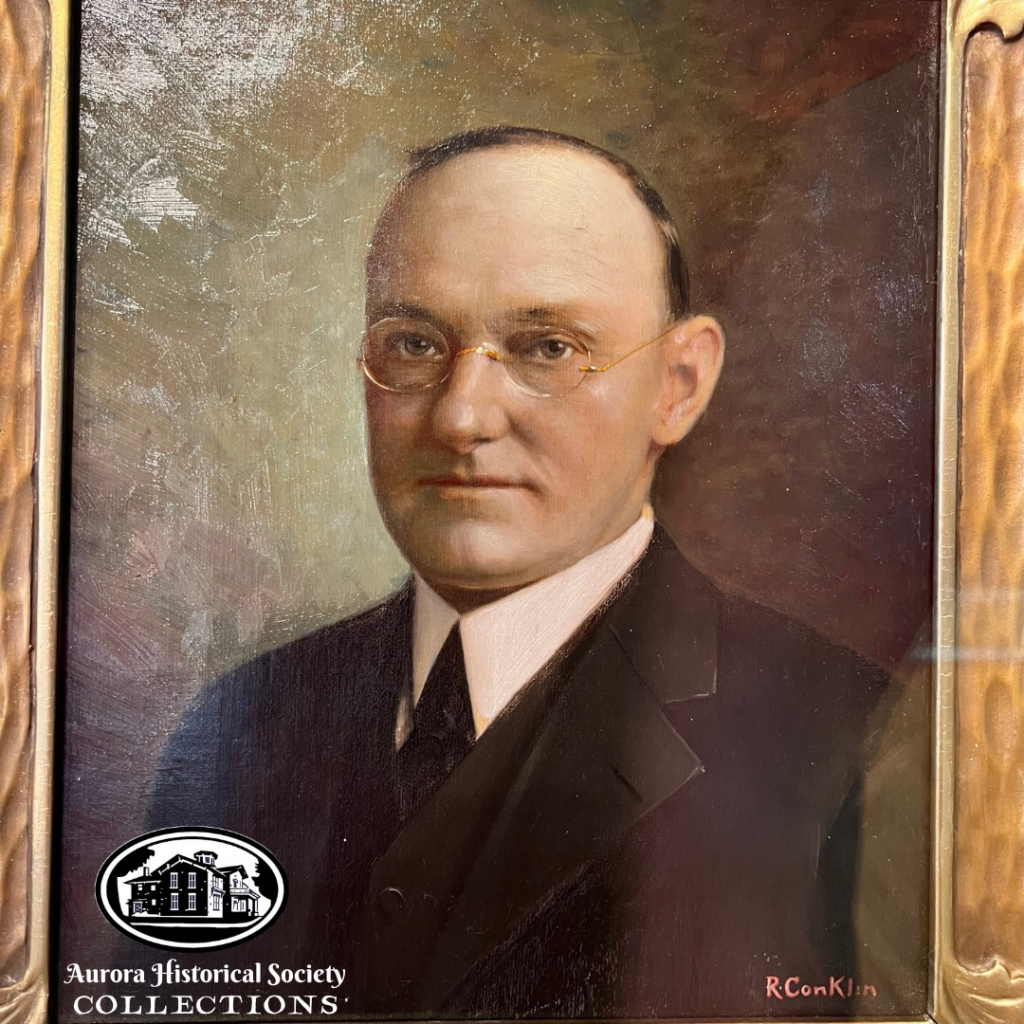
Oil on canvas by R. Conklin, 1920s
Albert M. Snook served as General Manager of the Beacon from 1907 until his death in 1930. Roy H. Conklin was a prominent Aurora artist in the 1920s and 1930s.
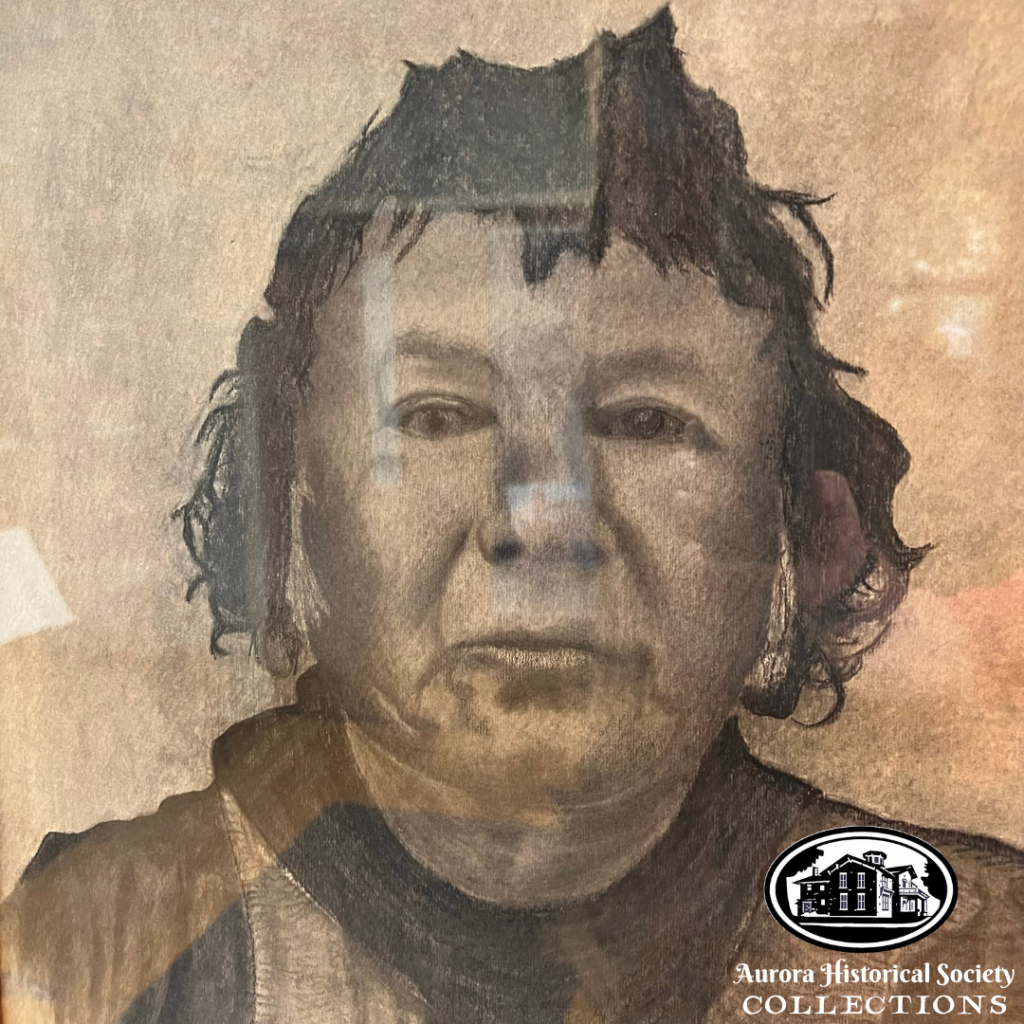
Charcoal on paper, artist unknown, c. 1890
Shabonna, whose name means “Built Like a Bear,” was an Ottawa by birth, and became chief in the Potawatomi nation. He became known as “Friend of the White Man,” and helped warn white settlers during numerous Indian uprisings. When the Potawatomi were removed from northern Illinois in 1836, Shabonna stayed here, living first on his tribal lands (granted him by treaty) in DeKalb County; later, when these lands were taken from him, he made his home near Morris in Grundy County.
This portrait was made long after death, and was based on the many existing images of him — photos, prints, and paintings.
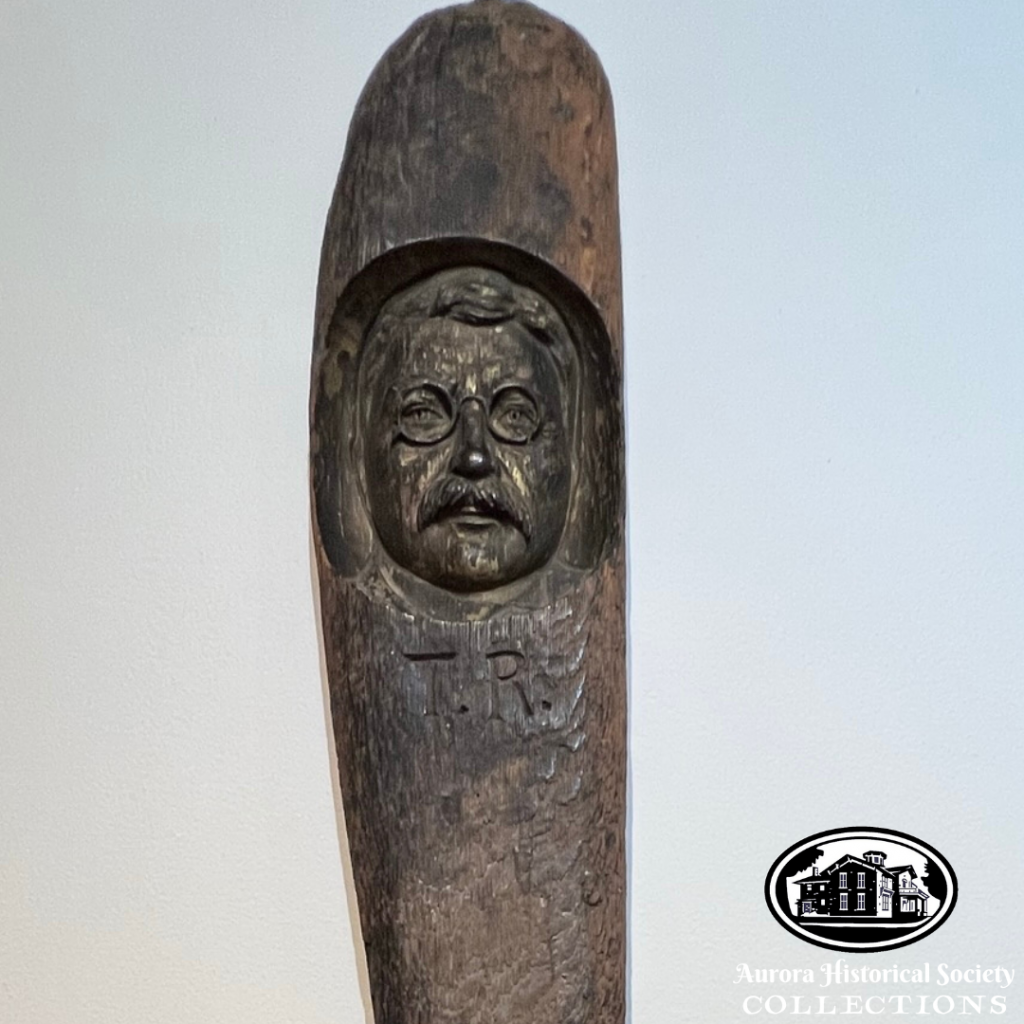
Image hand-carved into a large wooden club, 1912
The popular and exciting Roosevelt (1858-1919) served as the 26th U.S. president from 1901 to 1909. His motto was “Speak softly and carry a big stick” — this piece represents his “big stick.” It was produced during his unsuccessful 1912 “Bull Moose” presidential campaign.
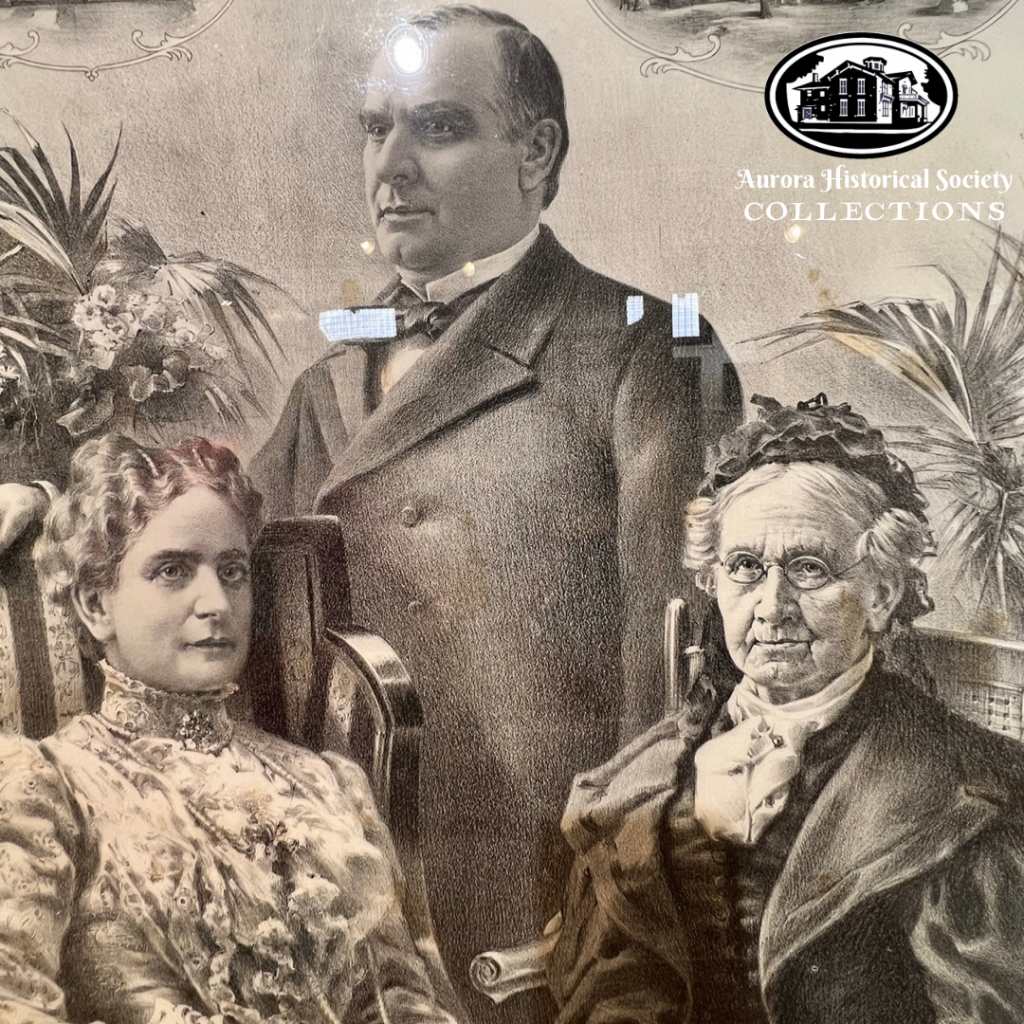
Lithograph on paper, 1901
Artist: Edwards, Deutschmark, & Herman
Publisher: International Art Company, St. Charles, IL
McKinley (1843-1901) was our 25th president, serving from March 1897 until his assassination in September 1901. After this tragedy, many memorial pieces were produced.
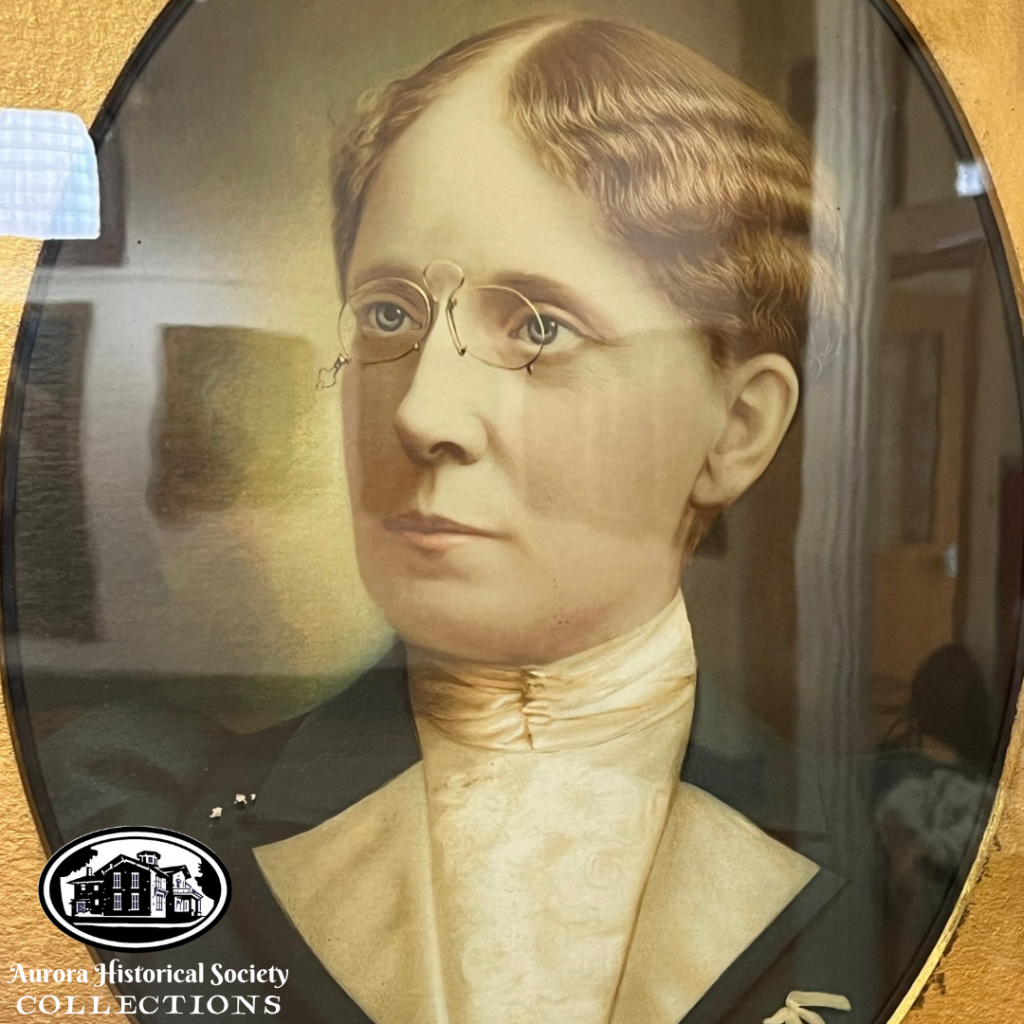
Four-color print on paper, dark-stained oak frame with gilded fillet and gold paper oval mat
Frances Willard was a famous American educator, reformer, women’s suffrage advocate, and the founder of the Woman’s Christian Temperance Union (1883).
This famous portrait was sold throughout the nation. This particular one was “Presented by the Aurora Woman’s Christian Temperance Union.”
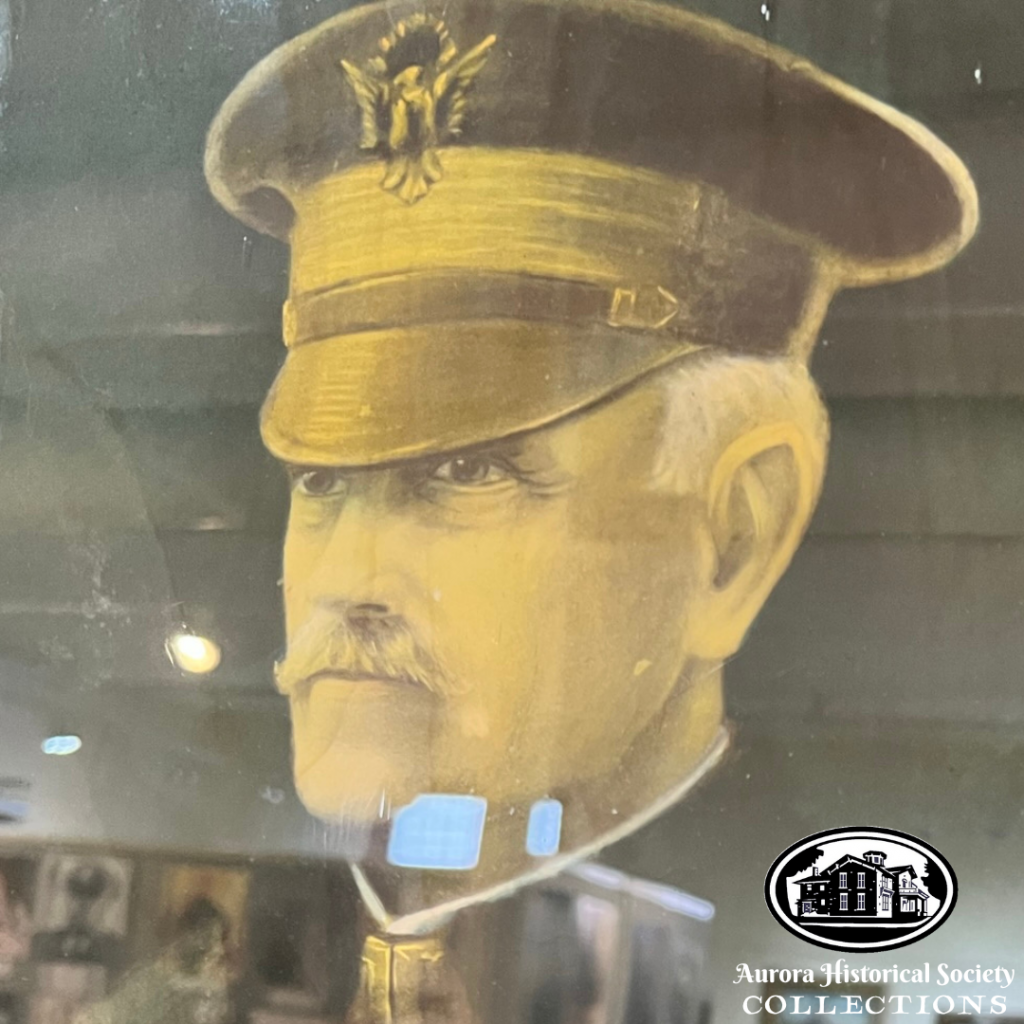
Four-color print on paper, 1918
Pershing was the commander of the Allied Expeditionary Forces during World War I. This print hung in the Cabinet Shops of the Chicago, Burlington, & Quincy Railroad complex on Broadway from 1918 to 1968.
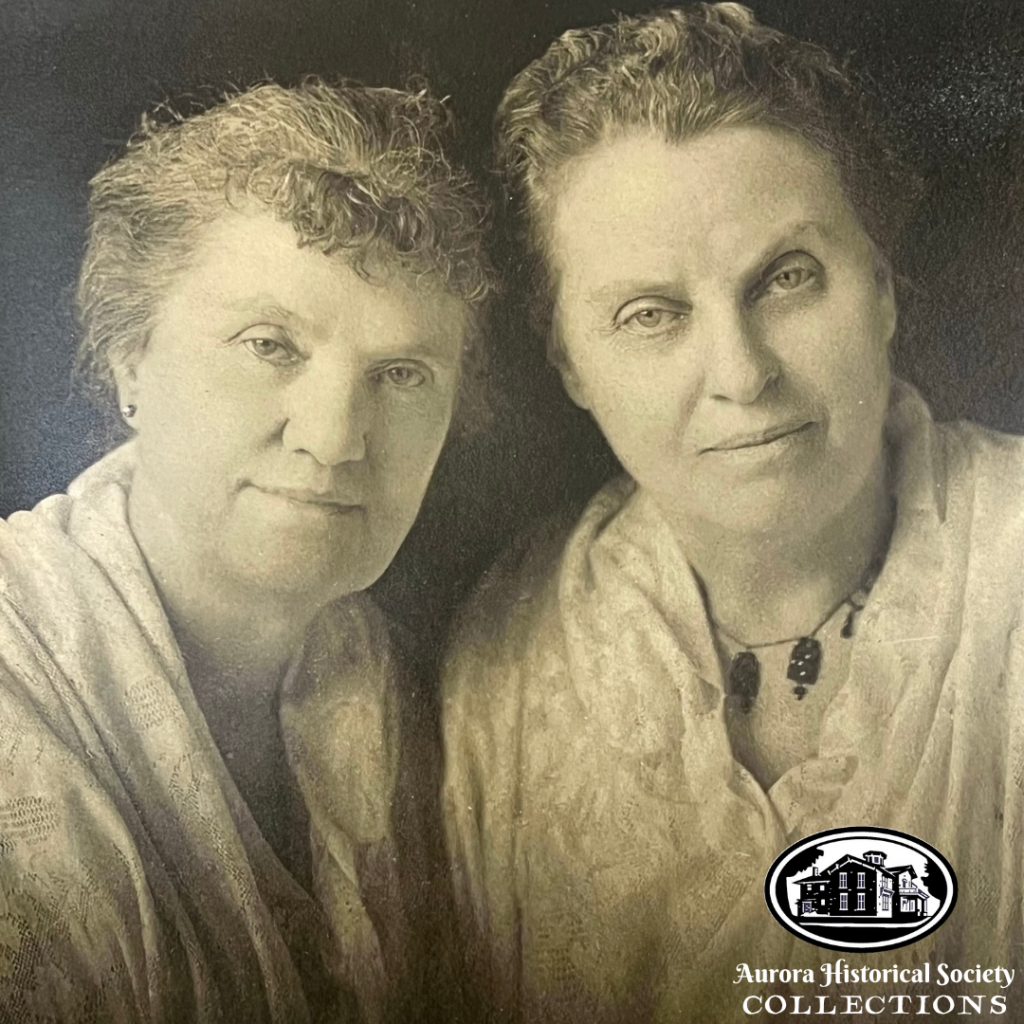
Photographed at age 69, June 1922
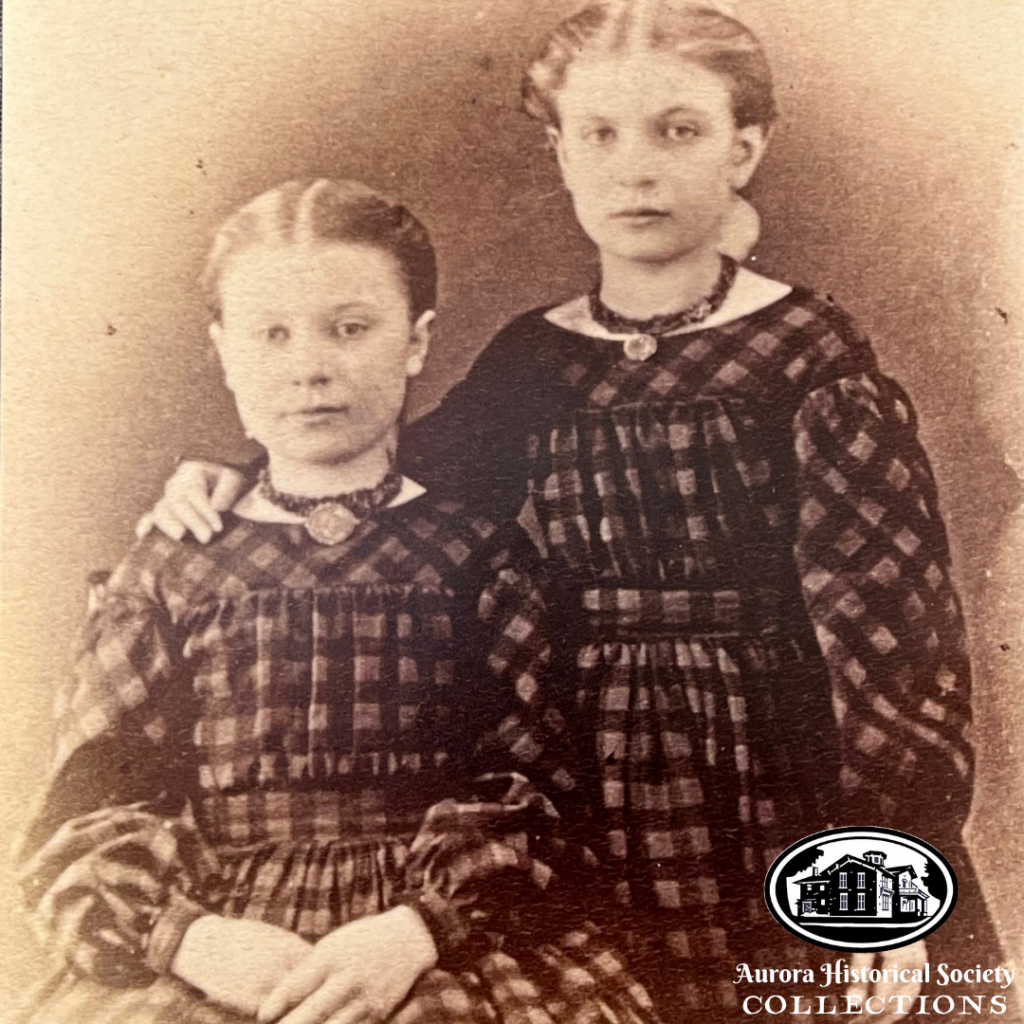
Photographed at about age 10
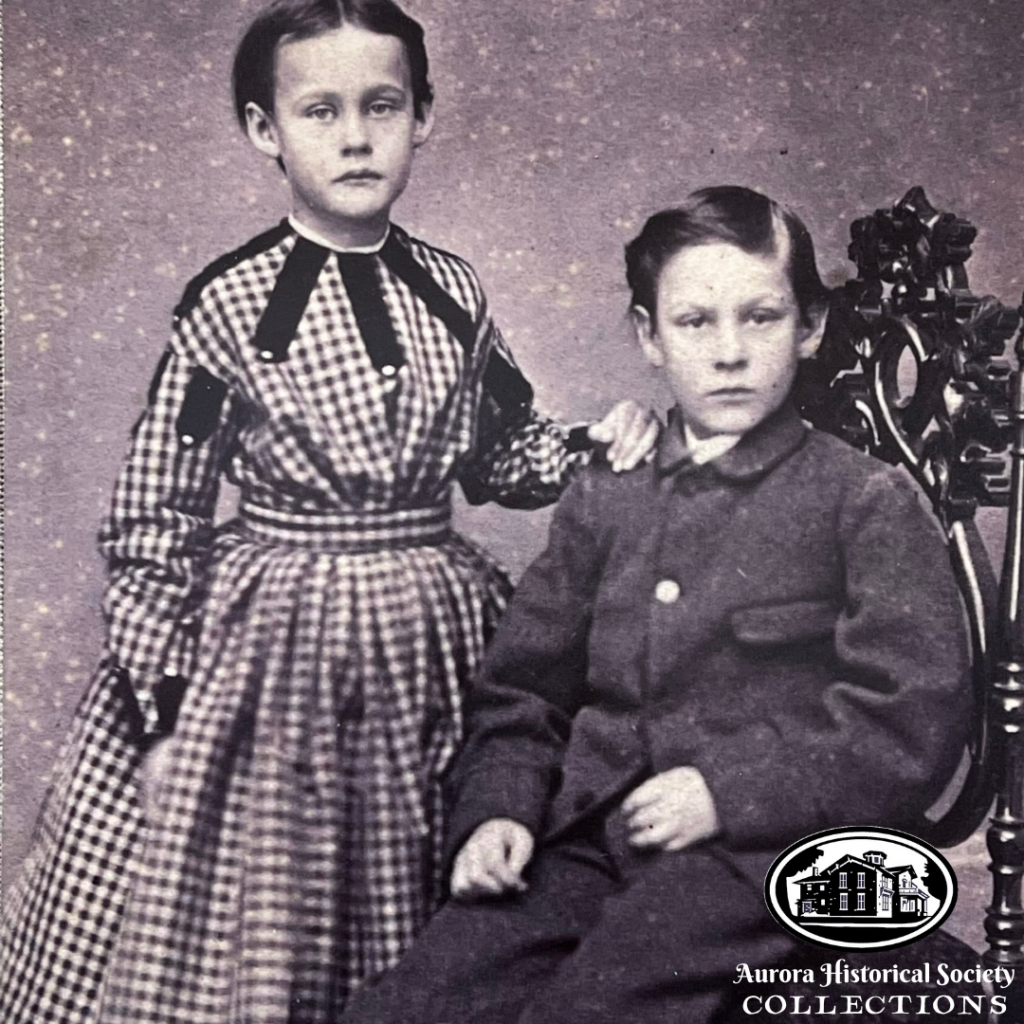
From a carte-de-visite photo by J.W. Wykes, Aurora
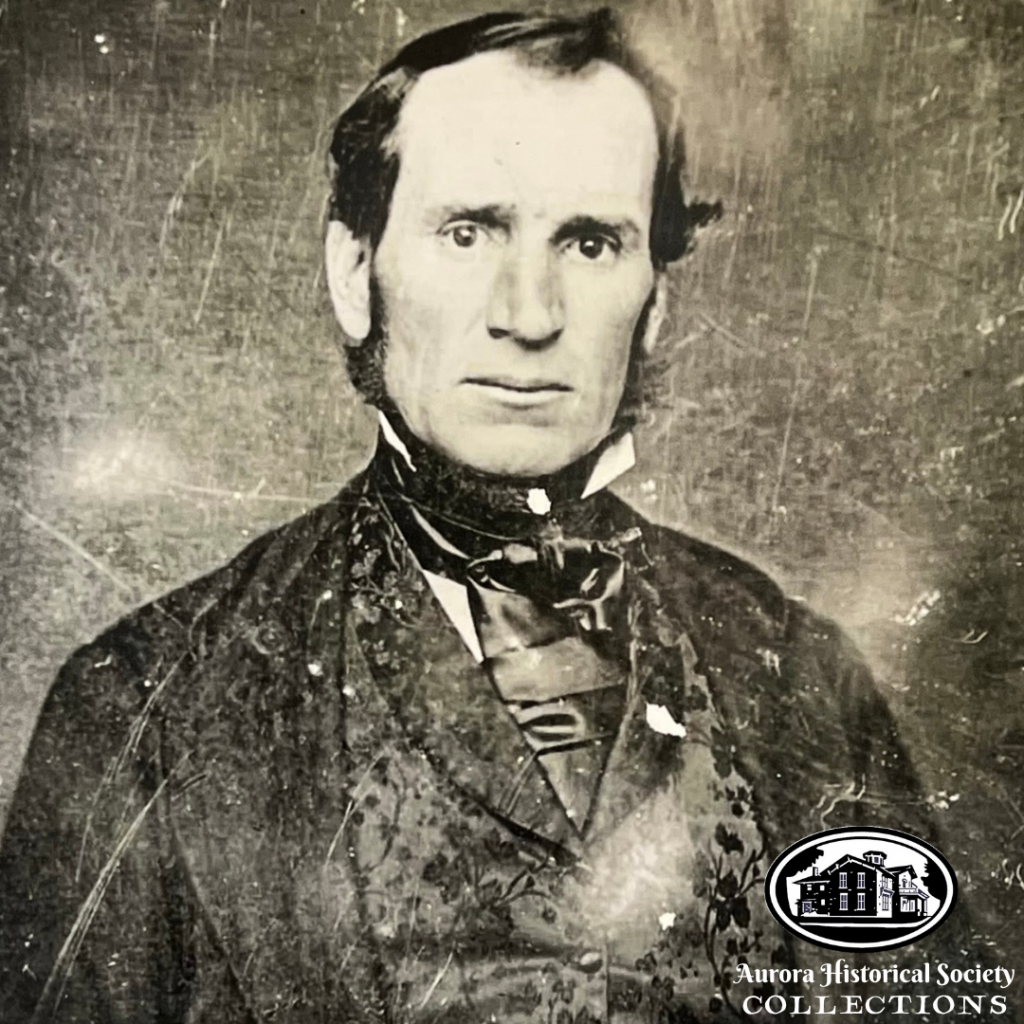
Photo enlarged from a daguerreotype original, about 1850
Samuel McCarty, Founder of Aurora
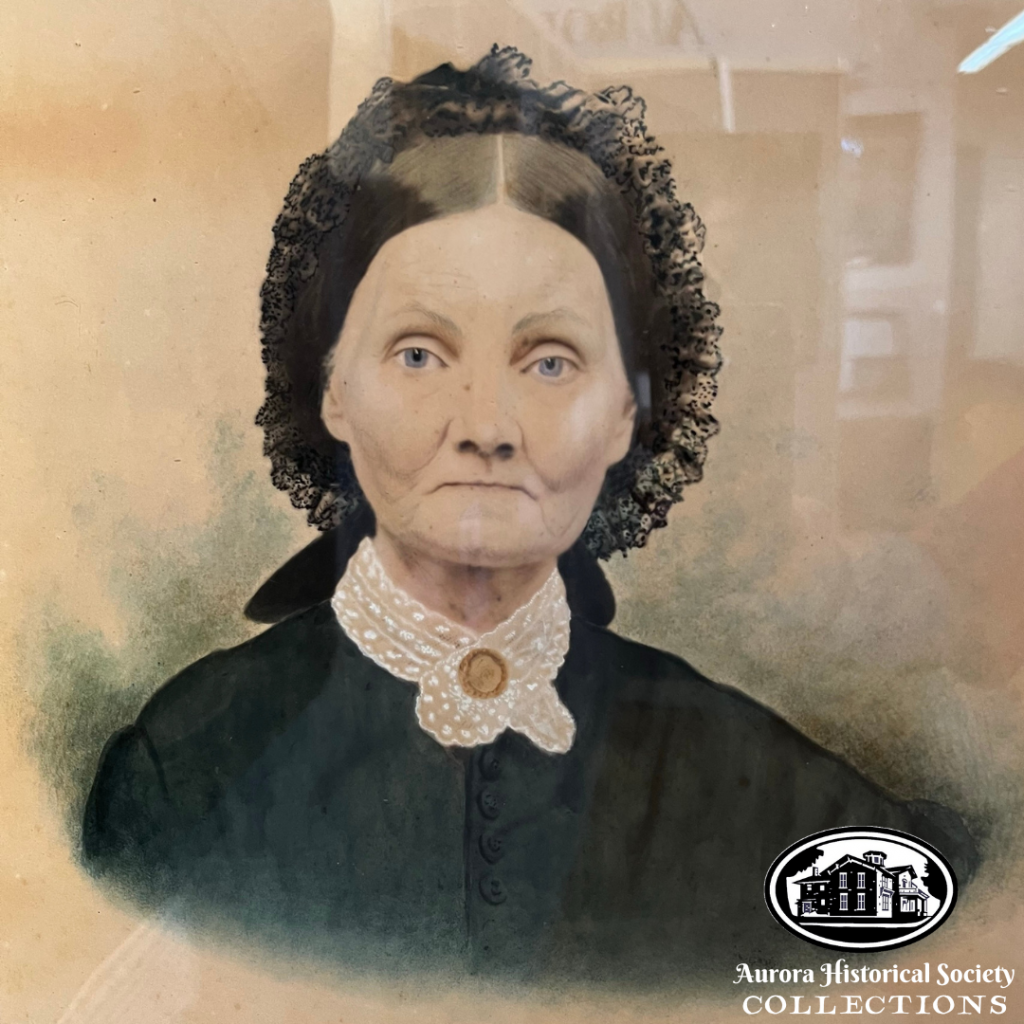
Watercolor over photograph on paper, c. 1870s
Eudoxia was the wife of Josiah D. Dunning (1803-1887), a prosperous Big Rock farmer who retired to Aurora in 1856. In 1857-58, he built the $20,000 stone Dunning Block on River Street. For years, its forth floor ballroom was the scene of major social events. Husband, wife, and daughter all died over three consecutive days at the beginning of March 1887. Their tombstone at West Aurora Cemetery reads, “In Death They Were Not Divided.”
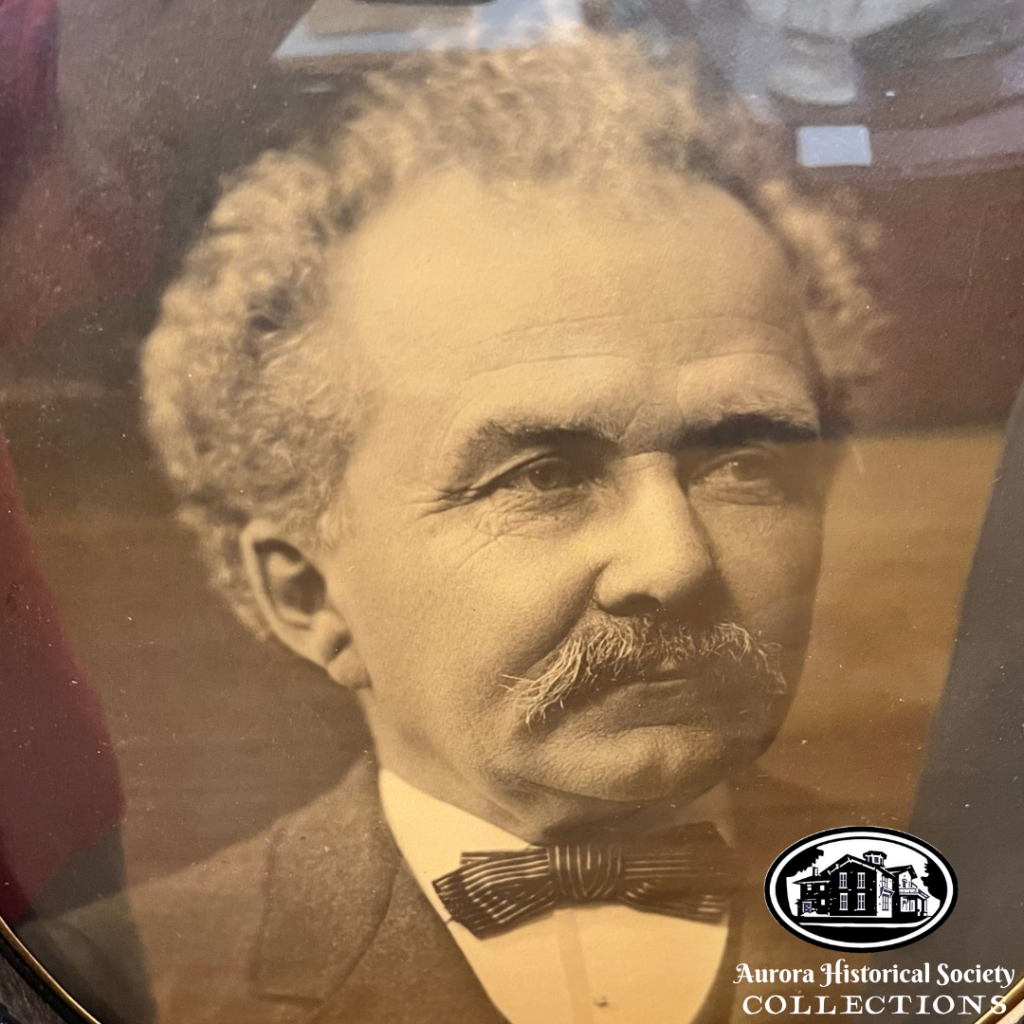
Naperville-born William Egermann moved to Aurora at age 25, got married, raised a family, and engaged in a variety of business interests. He was a merchant, selling first furniture, then groceries, and finally, jewelry. He served as alderman for several terms, served 14 years on the then-volunteer fire department (including a stint as chief), and was a director of the Merchant’s National Bank.
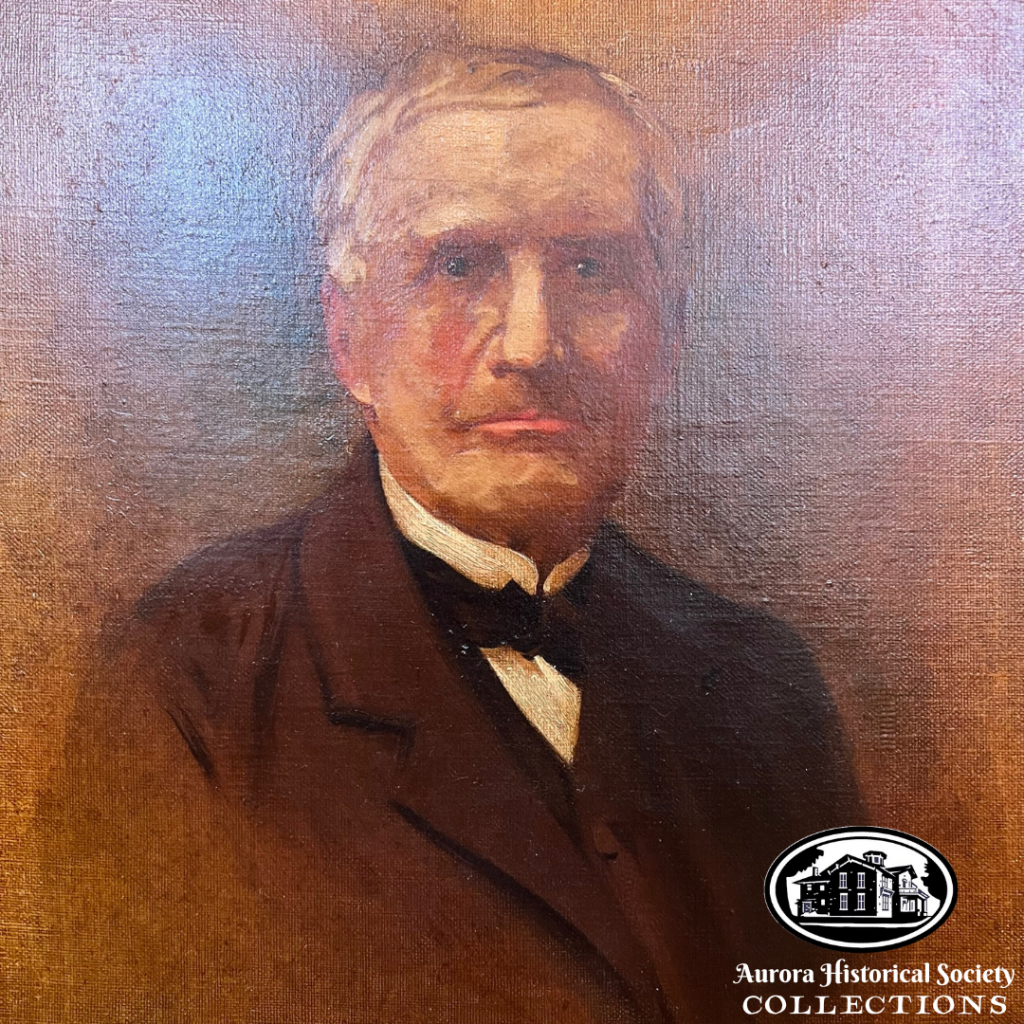
Portrait in oil on canvas by Helen M. Cox (1881-1961)
Prominent early Aurora settler Joseph G. Stolp set out at age 25 from his Marcellus, New York home to seek his fortune in the west, arriving in Aurora in 1837 when just 33 settlers lived here. Stolp opened Aurora’s first major industry, the Aurora Woolen Mills, on the island that now bears his name. Stolp was a leader in public improvements, such as the library, and his other business interests included the Aurora Silverplate Company and the First National Bank.
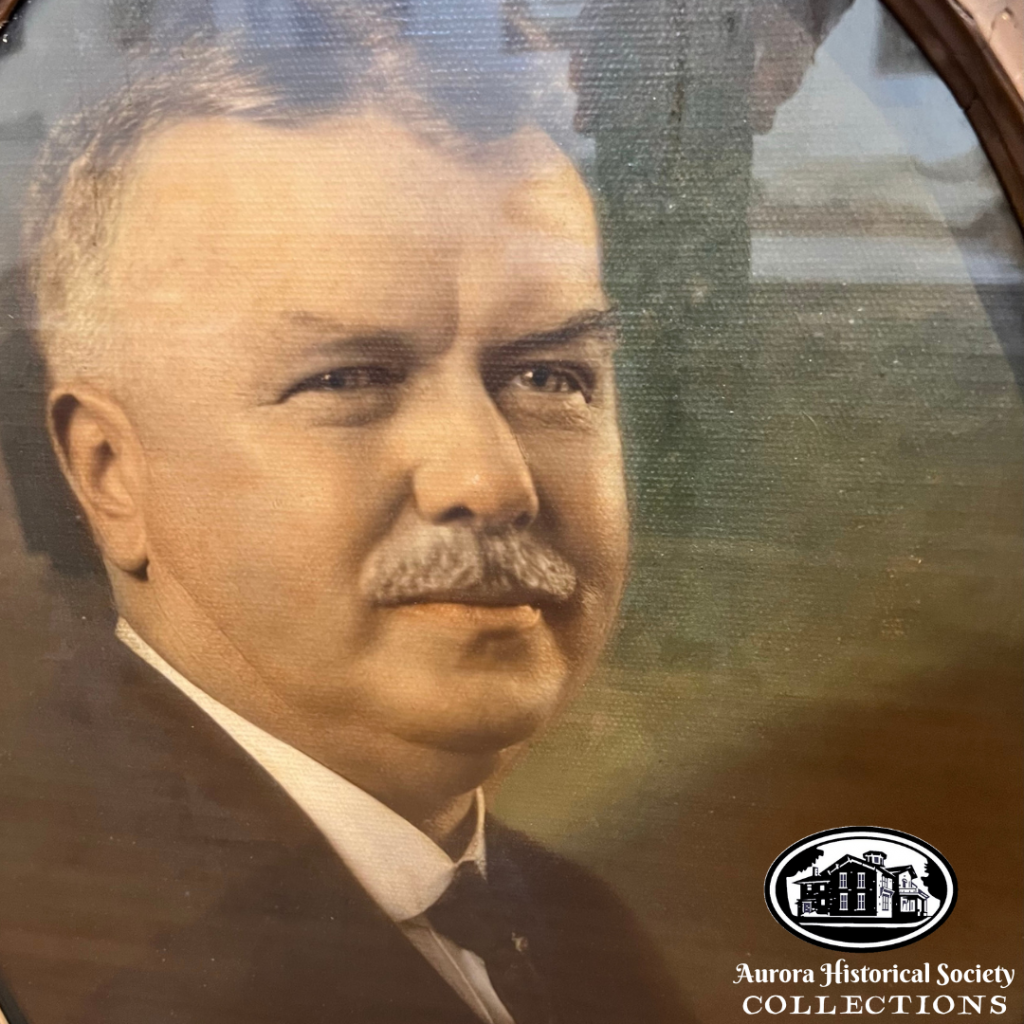
Hand-colored photo by R. Conklin
An Aurora resident since 1914, Cowan was a leading figure in the national life insurance field, and an art collector who owned $500,000 worth of paintings. Cowan hoped to make Aurora a center for art, and was the founder of the Aurora Art League. Roy H. Conklin was a prominent Aurora artist in the 1920s and 1930s.
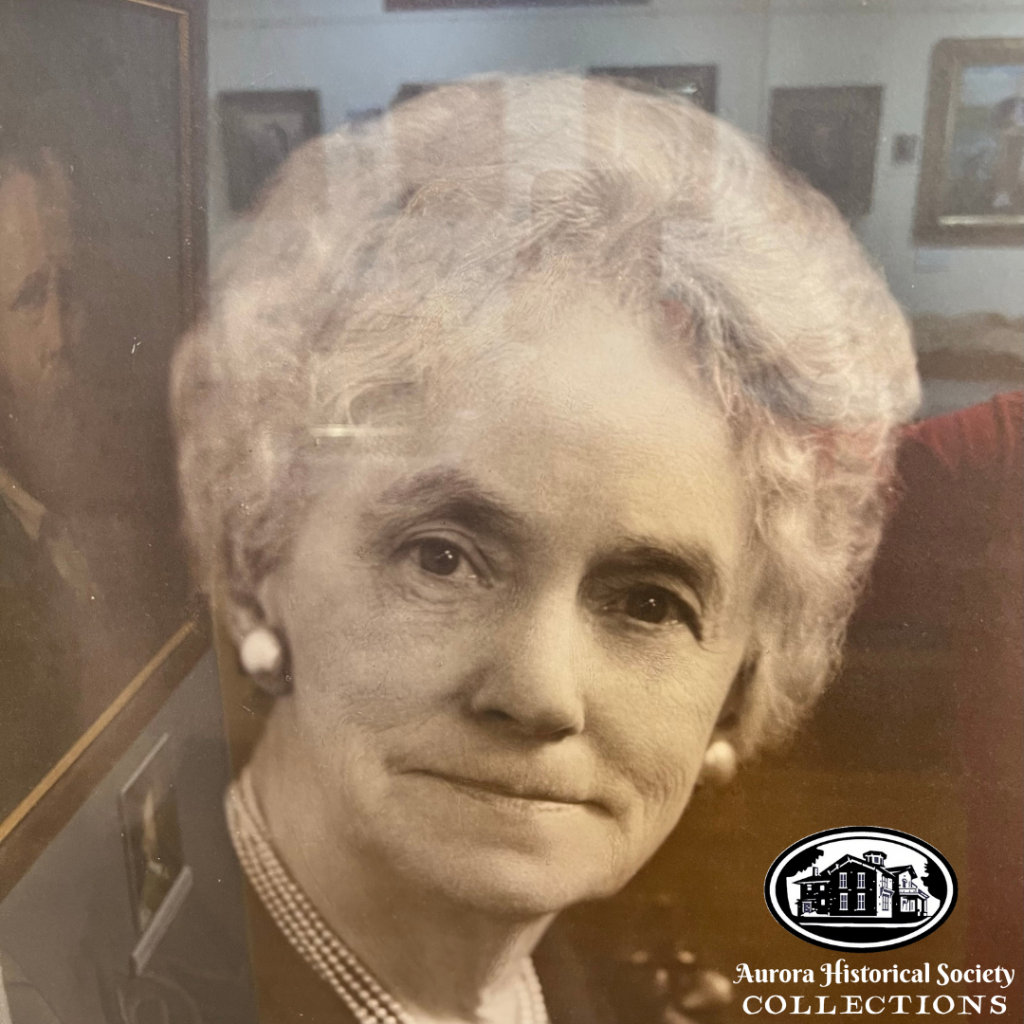
Receipient of the Aurora Cosmopolitan Club Distinguised Service Award — Photograph on paper, 1942
When Aurora’s Juvenile Protective Association established its first Home for Children in 1914, Mary Godard became its matron. In 1923, the home moved to larger quarters, and Mary remained its matron, with an average of 50 children under her care, and the facility being named “The Mary Godard Home for Children.” The children knew her as “Goddy” and the community knew her as “Mother Godard.” She supervised the home for 29 years, and upon her death, about ten years after her retirement, the Beacon-news said, “She mothered more little folk than anyone in Aurora history.”
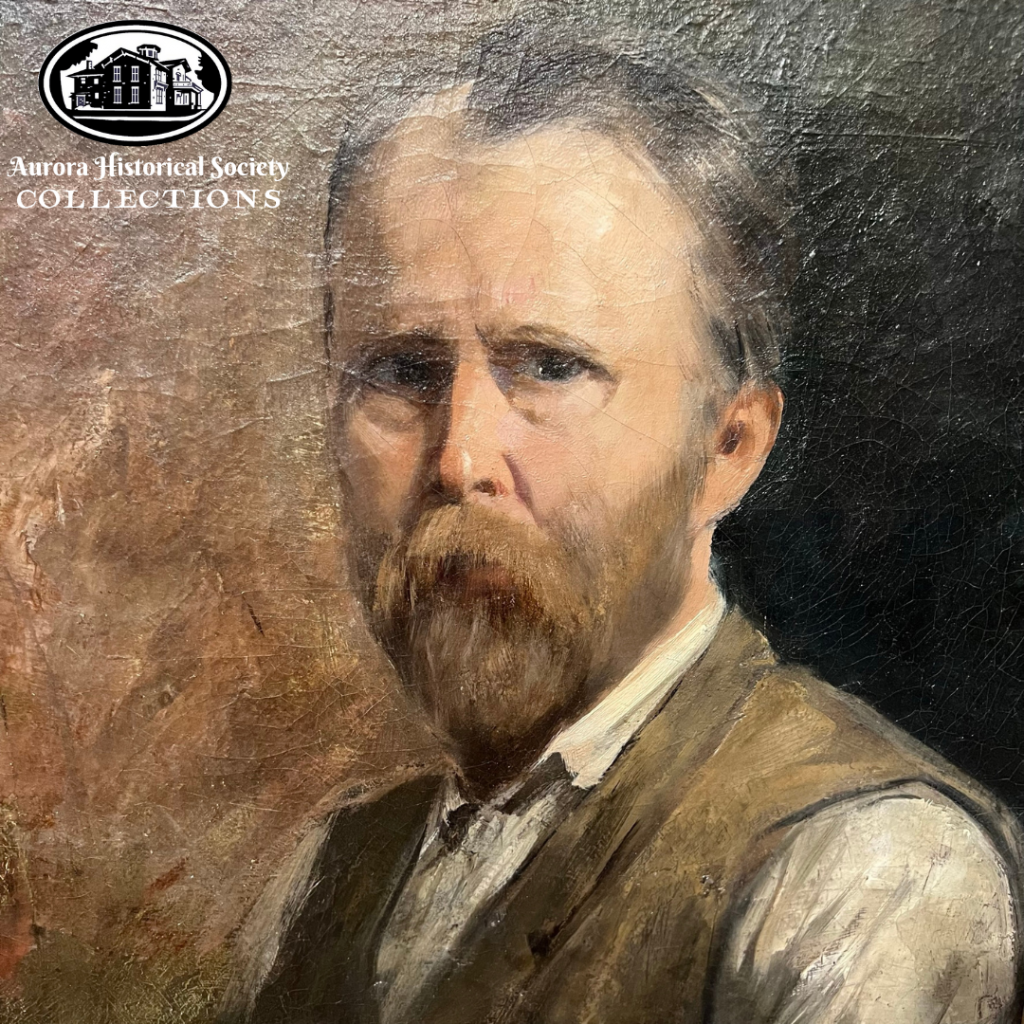
Self-portrait, oil on canvas
A nephew of Aurora founder Samuel McCarty, Brown grew up on the east side of Aurora, spent some years in California, and studied art for two years in Europe. He returned to Aurora where he excelled as a painter of portraits and landscapes. He is buried in Spring Lake Cemetery.
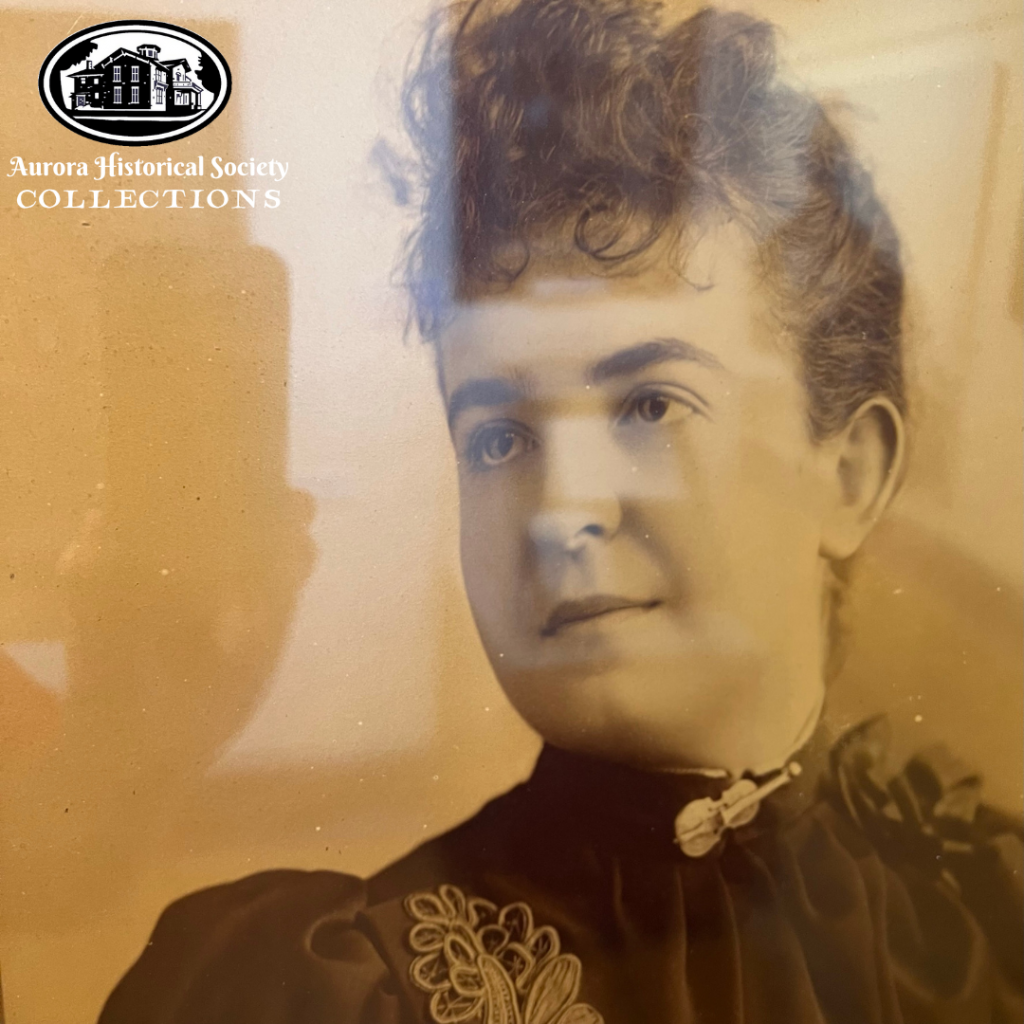
Photograph on paper, 1890s
Minnie “Maud” Powell was born in Peru, Illinois but spent her youth in Aurora. A child prodigy with the violin, she studied for three years in Europe before coming home to an American debut in 1885. From that time until her death, she was considered the premier female violinist in the world. She toured extensively and was the first instrumentalist to make records for the Victor Talking Machine Company starting in 1904.

Photographed for his 75th birthday, March 9, 1911
Henry H. Evans lived in Aurora from the age of five. His business interests were many — restaurant owner, hotelier, banker, electric railway promoter, and real estate mogul. He also served in the Illinois state senate for nearly thirty years.
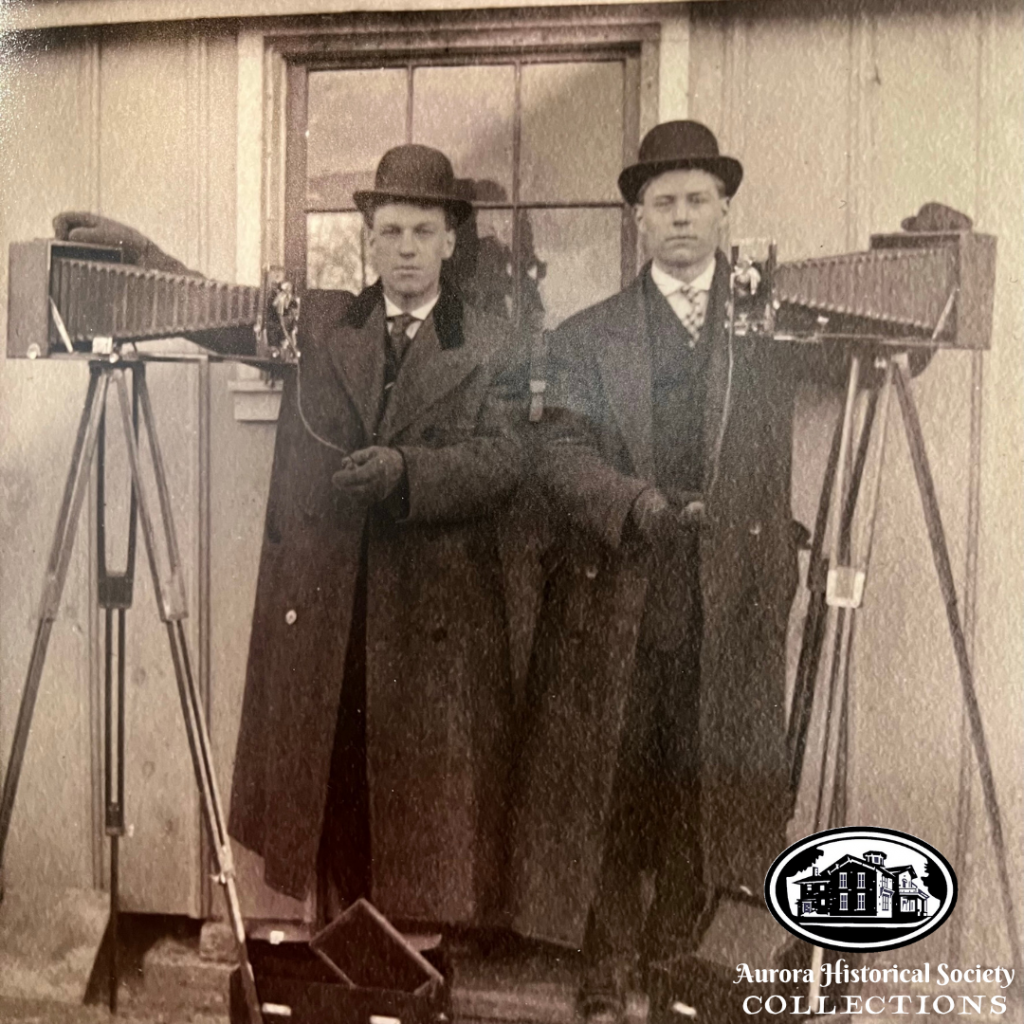
Peter N. Millen, standing at right with brother Mike on the left, was a prominent amateur photographer, especially active in the 1910s, about the time of this photo.
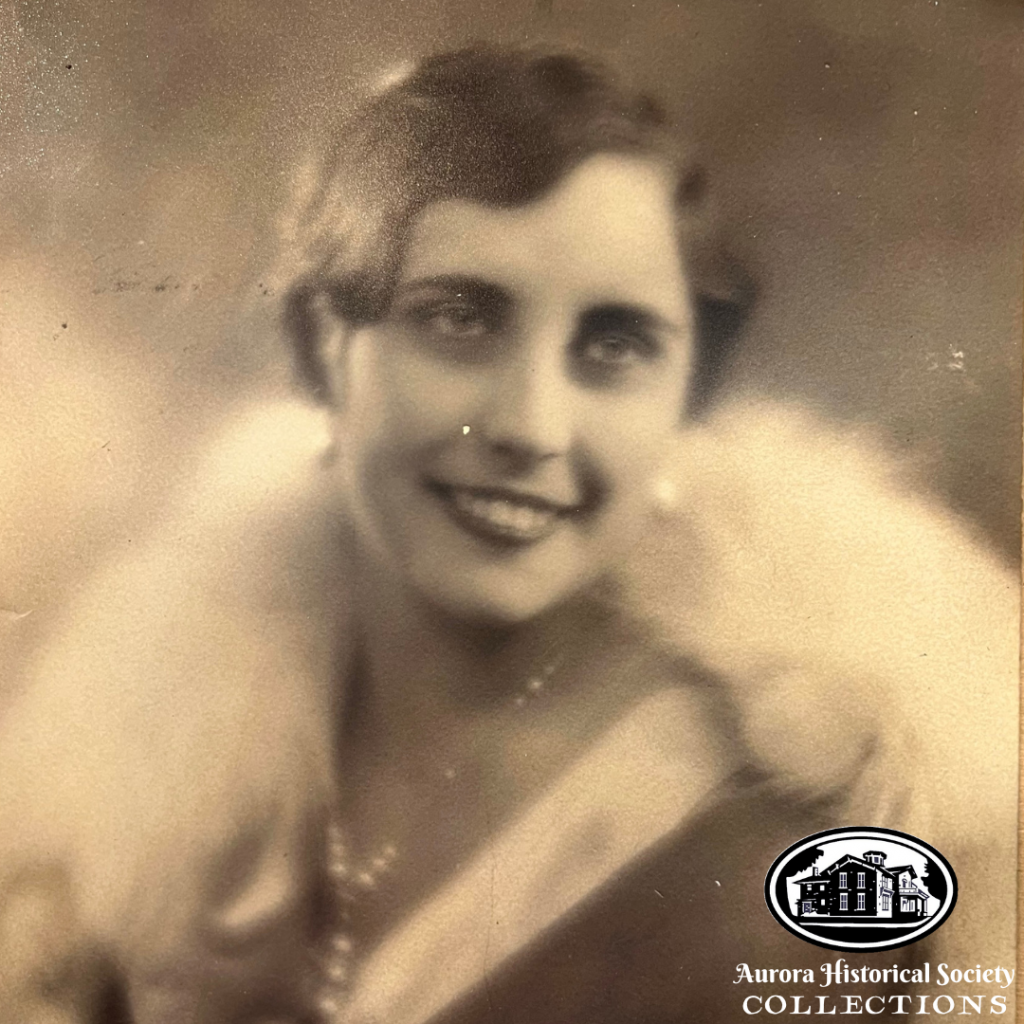
Photograph, about 1930
A lifelong Auroran, Lois Lamoreaux graduated from West High in 1928 and from Northwestern University in 1931. In the 1930s, she was an art teacher at East High. In 1940, she married Francis Joseph Houlne (1909-1971); together, they ran a business and raised a son. After her husband’s death, Lois was very active in many organizations, including the Aurora Historical Society.
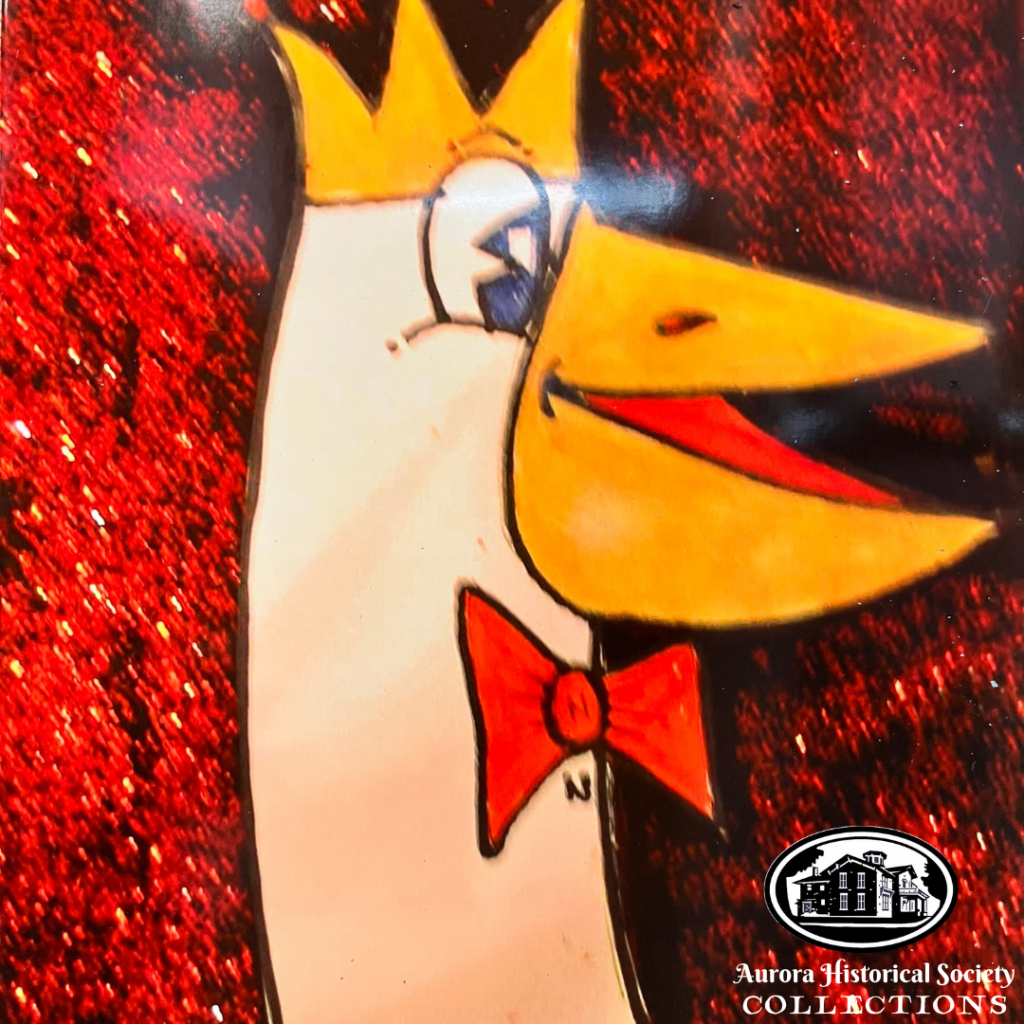
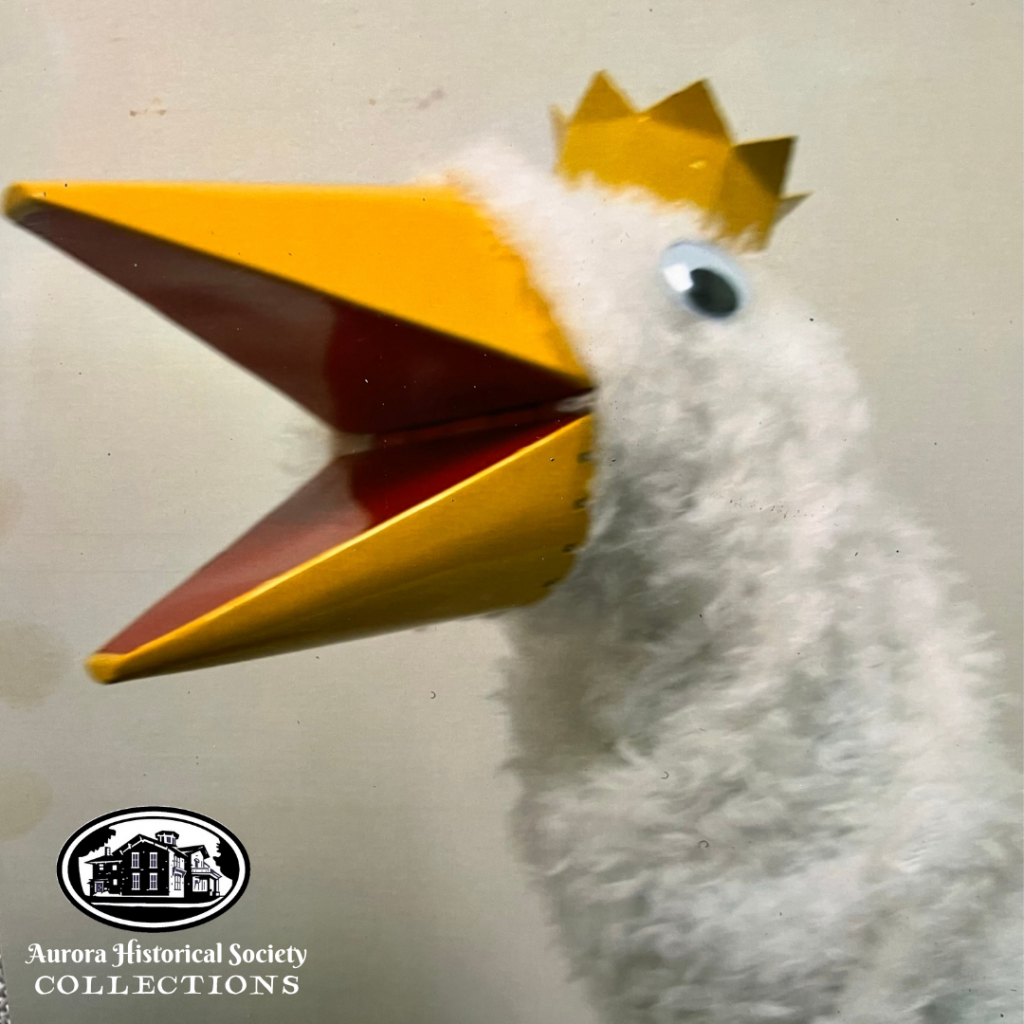
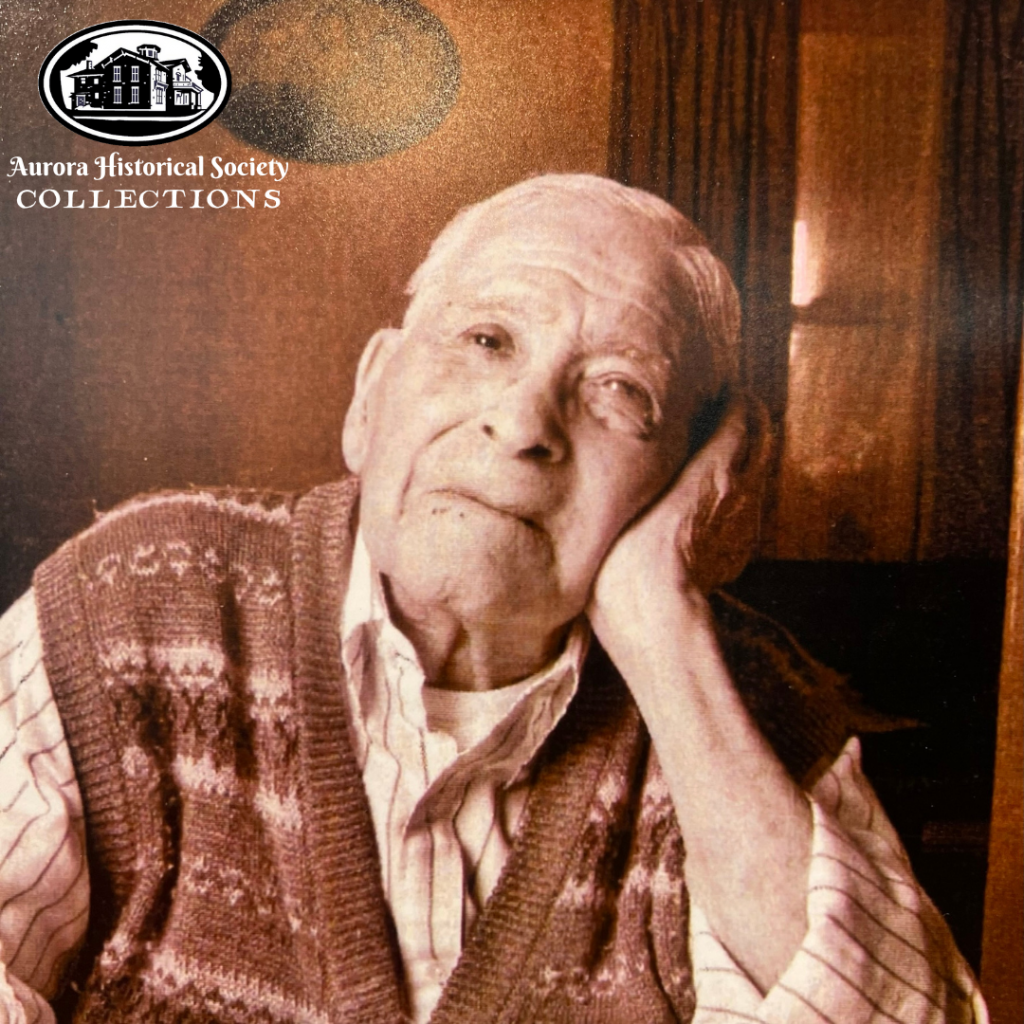
Photographed for his 105th birthday by Jimi Allen, 2006
Senobio Nila was one of Aurora’s early Mexican immigrants, arriving in 1923 to live in the Boxcar community.
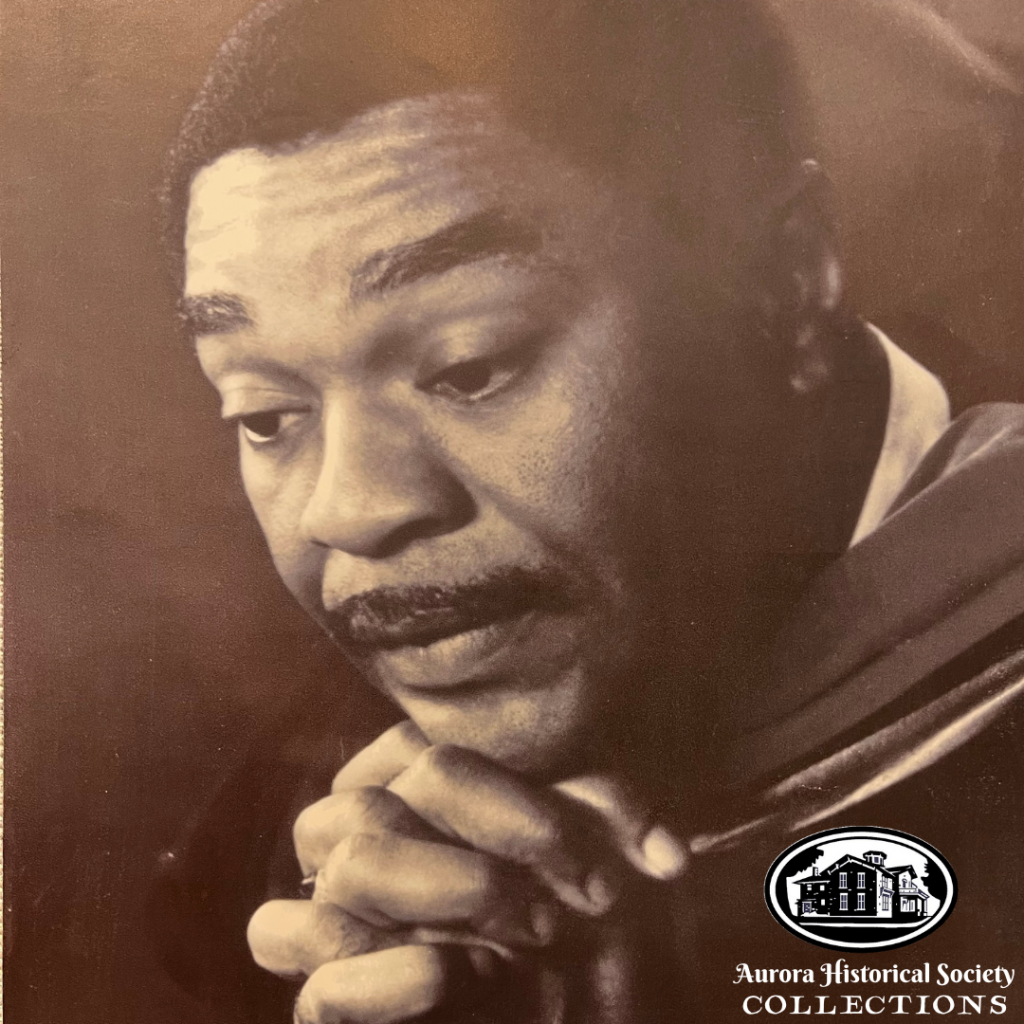
Rev. Robert Wesby was involved in the national civil rights movement since the early 1960s, and was chairman of the Aurora chapter of Operation PUSH. In 1963, he founded the Progressive Baptist Church, where he was served as pastor for 25 years, until he was killed inside the church in 1988.
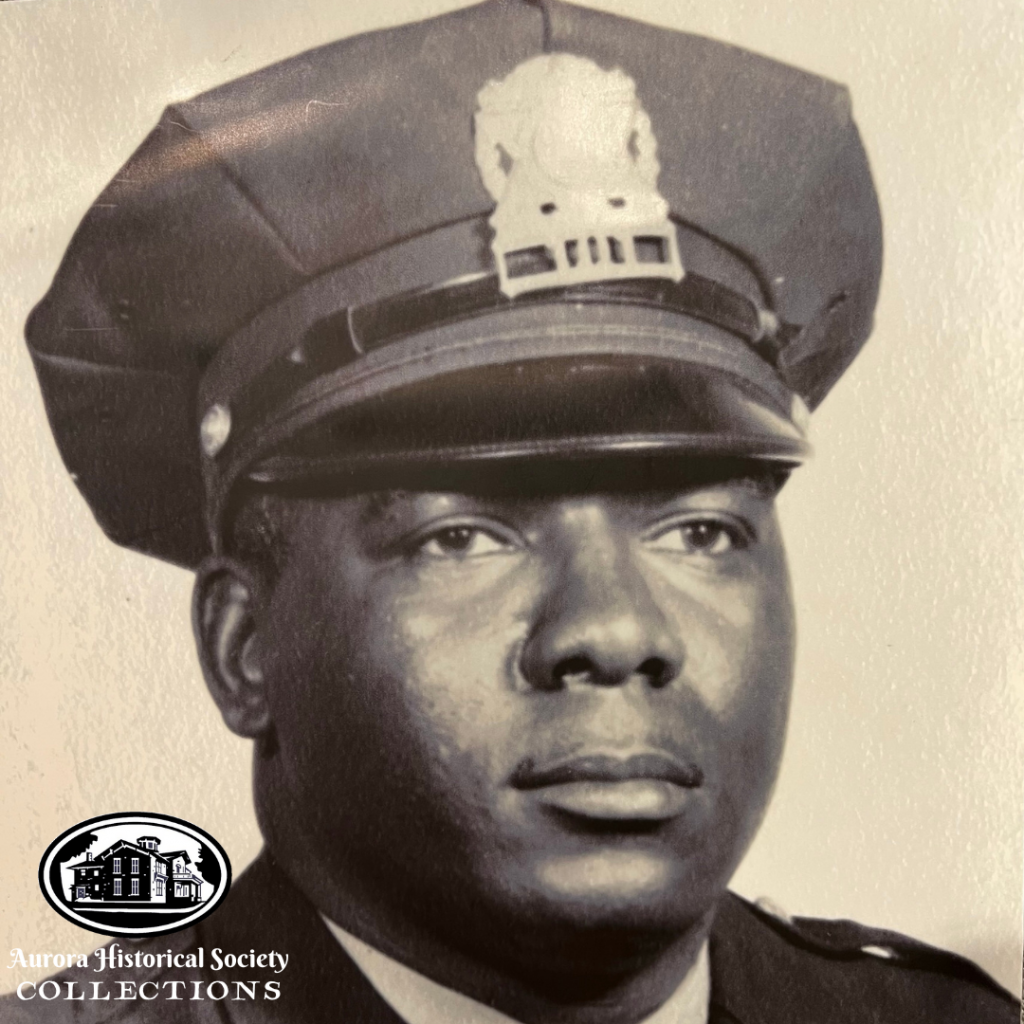
Aurora Police Department Photo, 1964
Born in Mississippi, Clinton Mayes served in the Marine Corps during the Korean War. He became Aurora’s first Black police officer on October 5, 1964. He left the department in 1970 to become a special agent in the Illinois Bureau of Investigation, which later merged with the state police. After retiring from the state police in 1991, he worked as an armed security officer.
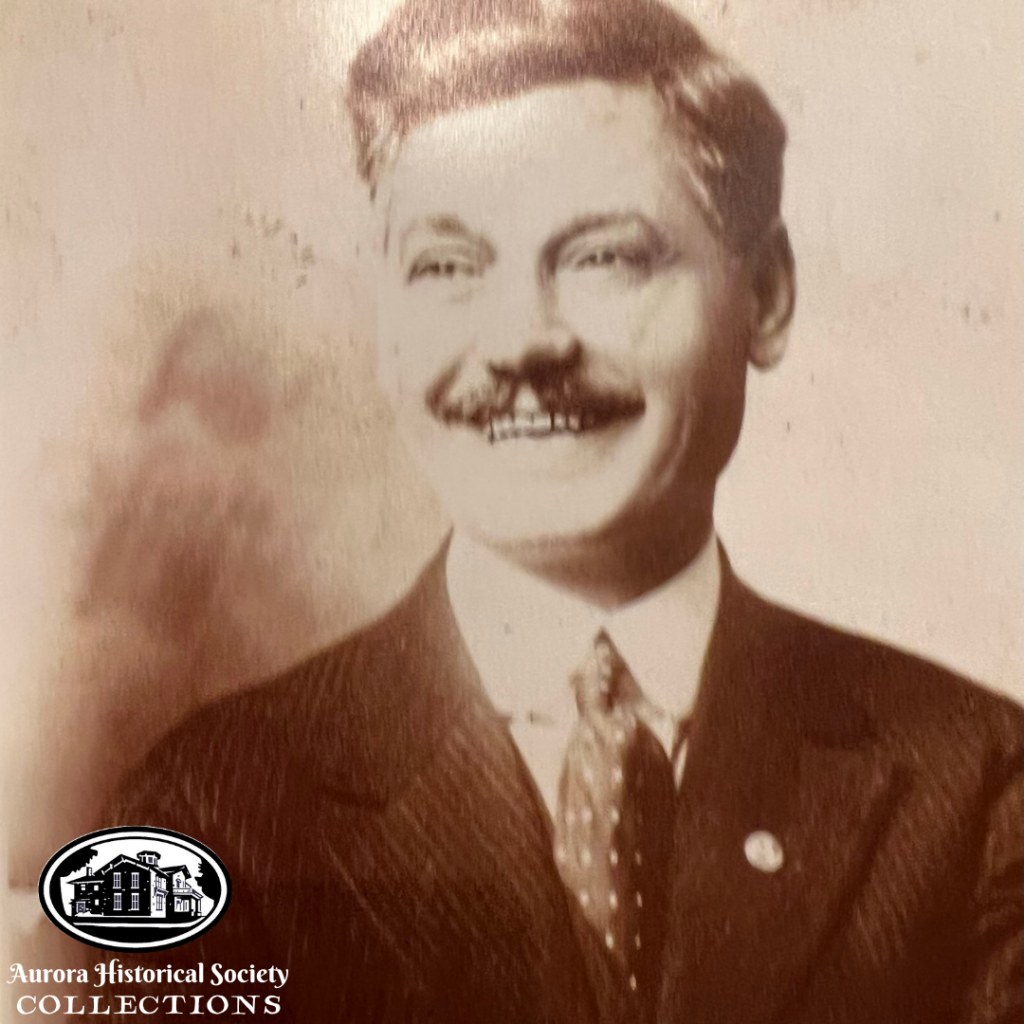
Born in Greece, Harry C. Paulos came to Aurora in 1906 and soon opened a confectionary, “Paulos Brothers,” with his two brothers. By the 1920s, he was a major investor in the Fox Theater and a principal owner of Exposition Park amusement grounds.
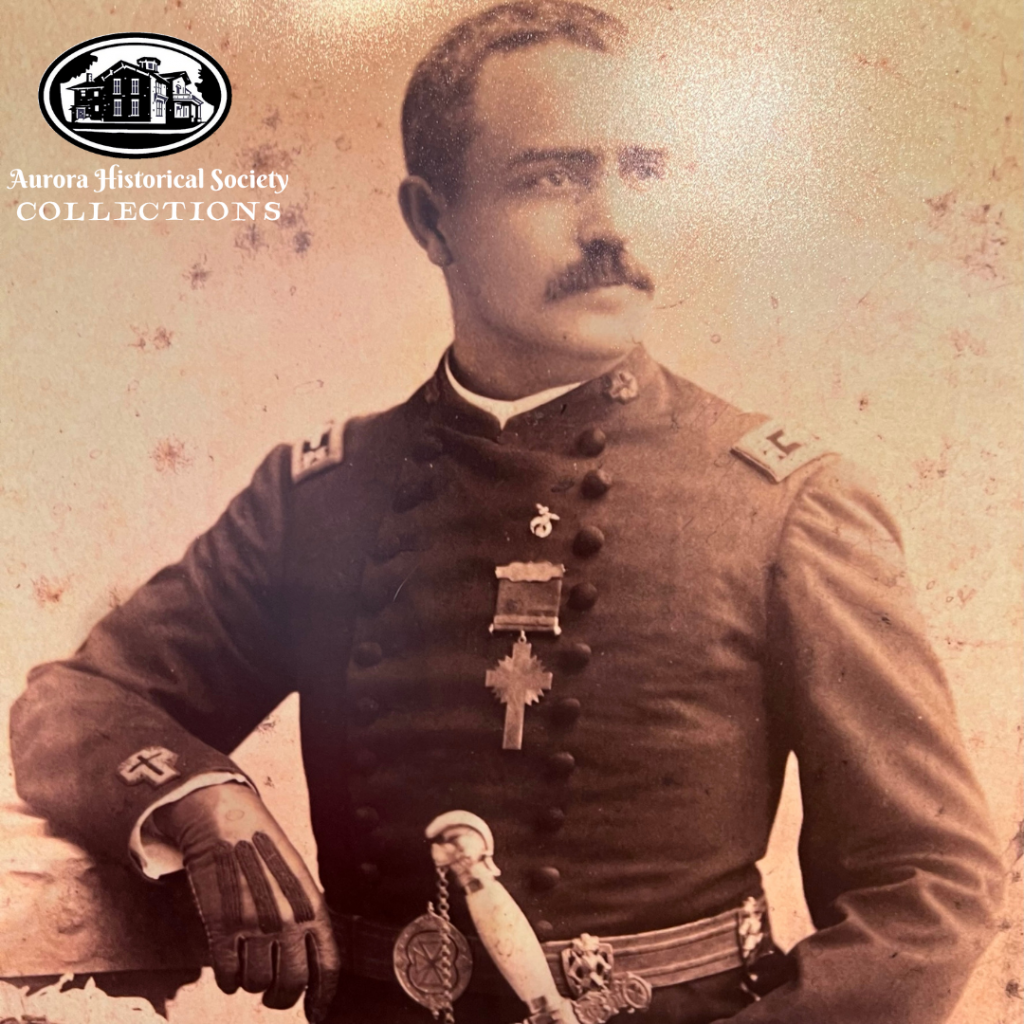
Willis E. Hoyt was the son of Charles Hoyt, pictured in his masonic Knights Templar uniform. Enlarged from a cabinet card photo by V.H. Snook, about 1890.
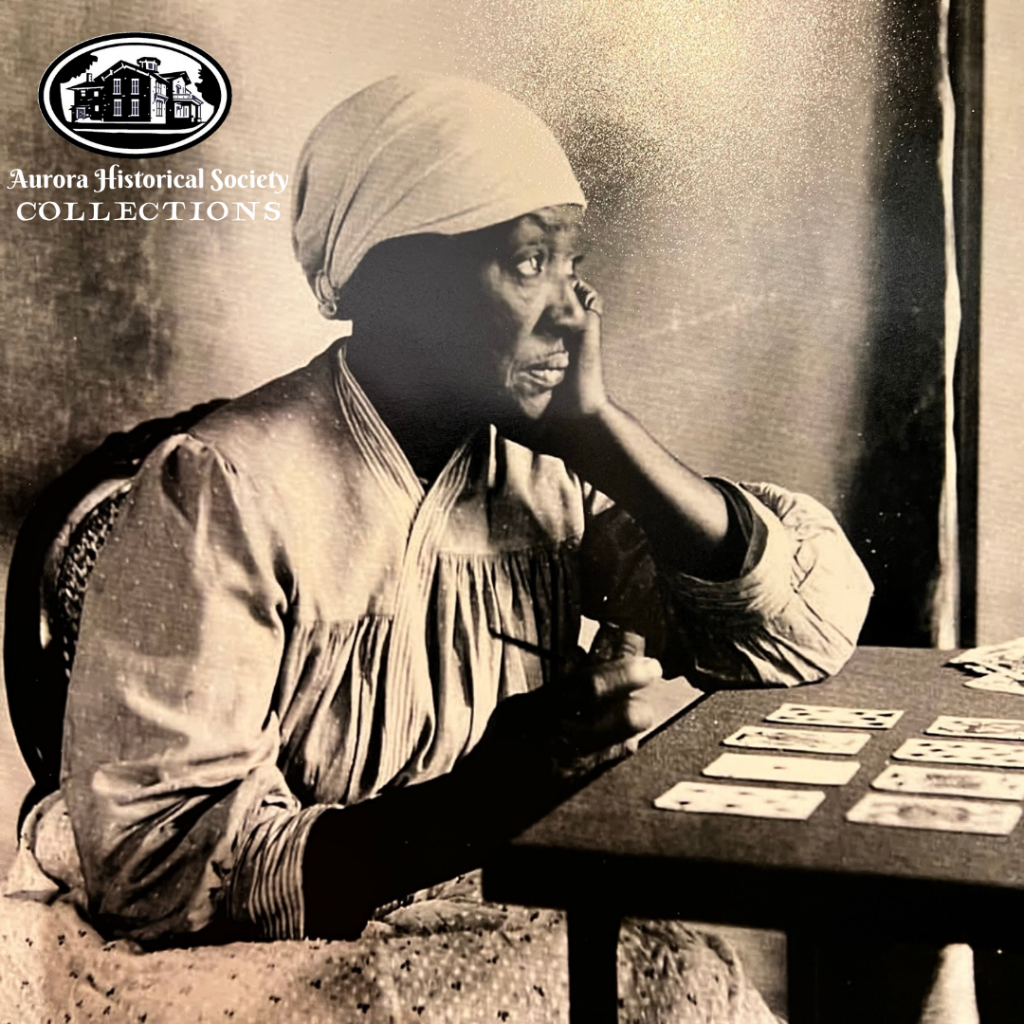
Caroline “Carrie” Jackson was born a slave in Tennessee in 1839. About 1871, she came north to Aurora with her husband, William. After his death, she made a living as a washerwoman and domestic servant. This photo was taken in 1913 by local photographer J. P. Hambly. He titled it, “Aunty Jackson’s Reverie.”
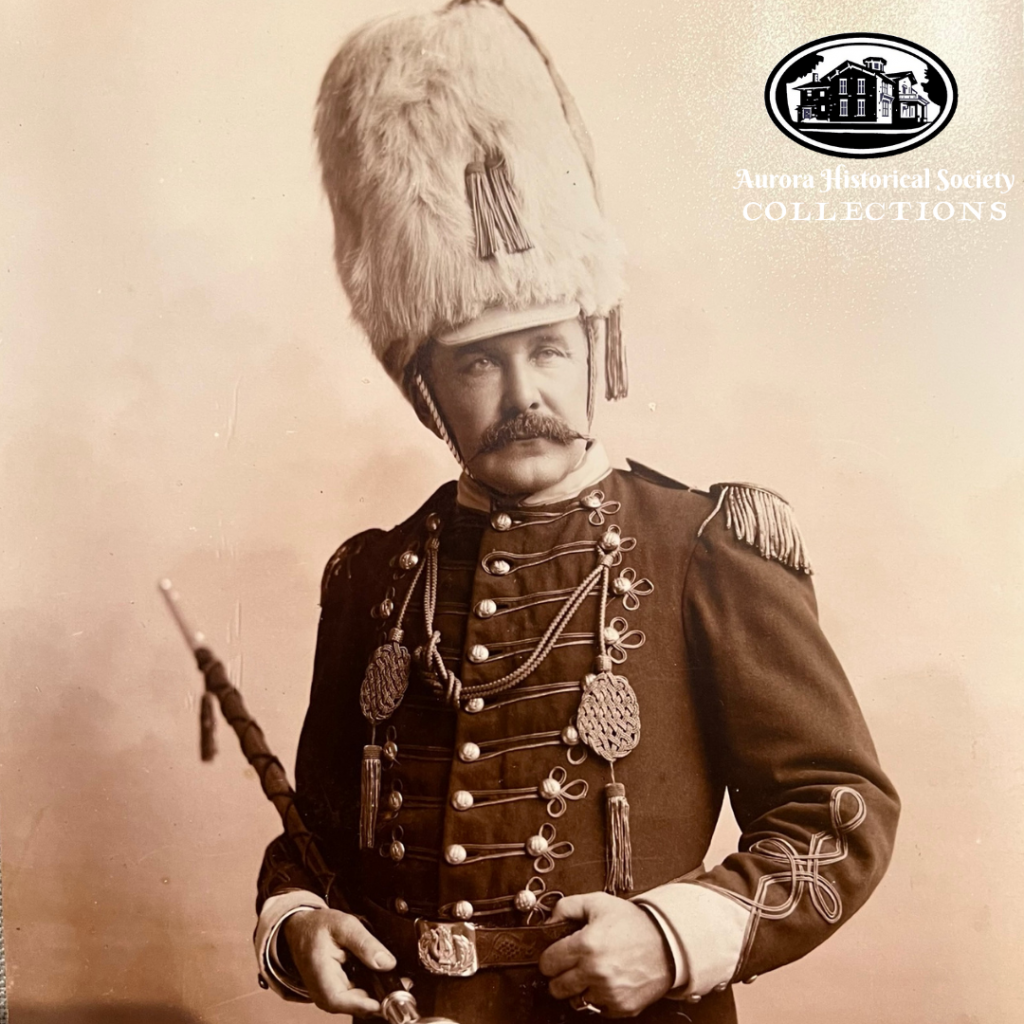
William “Billy” Egermann in his uniform as leader of the Aurora Military Band, 1892. Enlarged from a cabinet card photo by D. C. Pratt.

Mary K. Molitor in her wedding dress. She married Peter Kammes (1861-1946) on May 24, 1892. Enlarged from a cabinet card photo by Casimir Arcouet.



